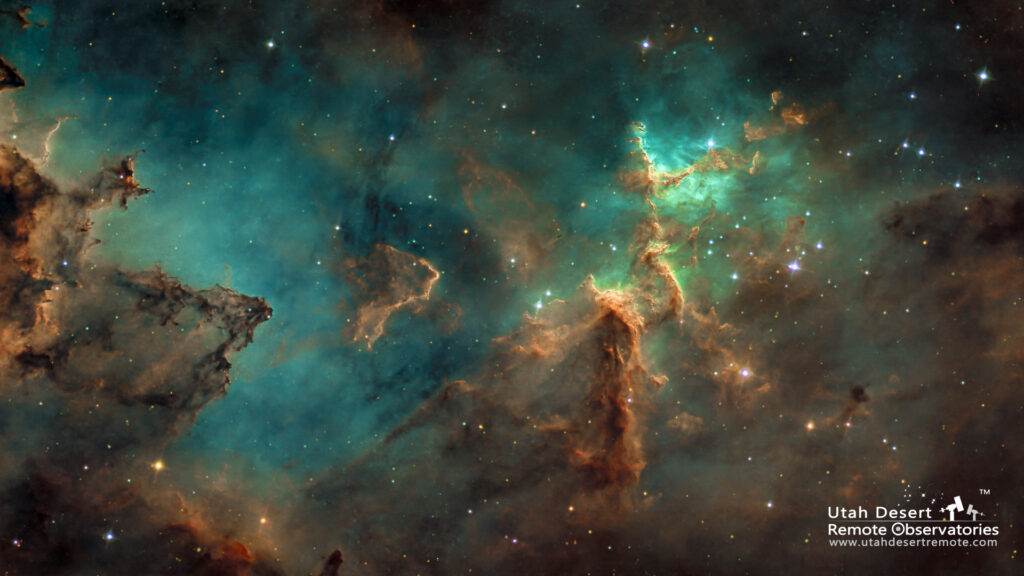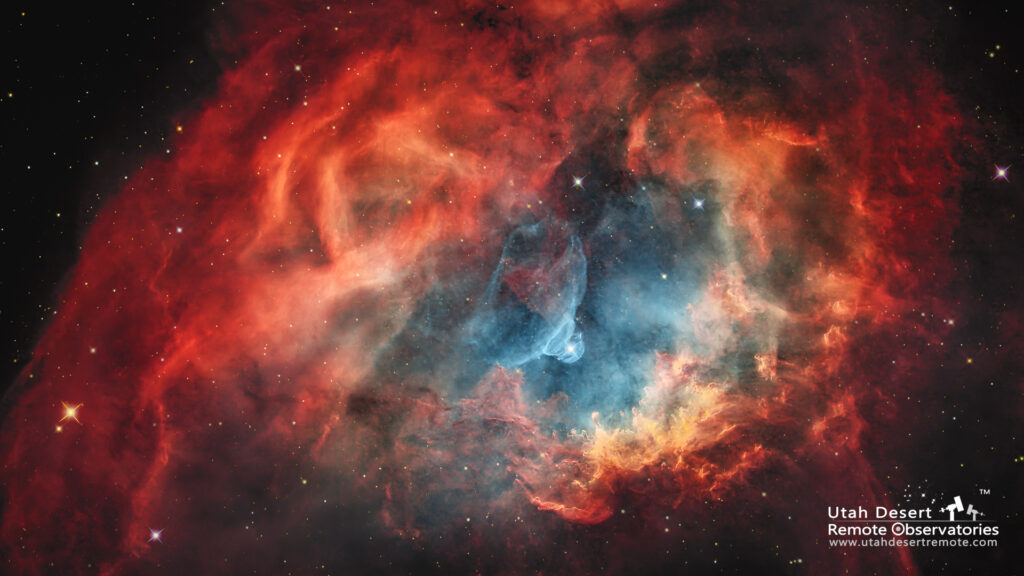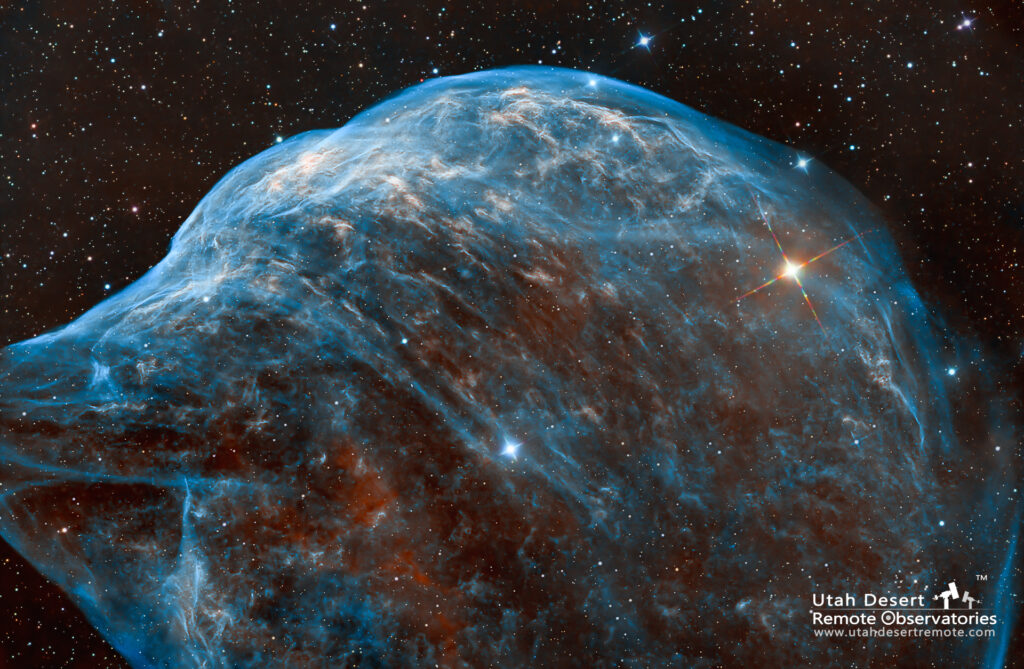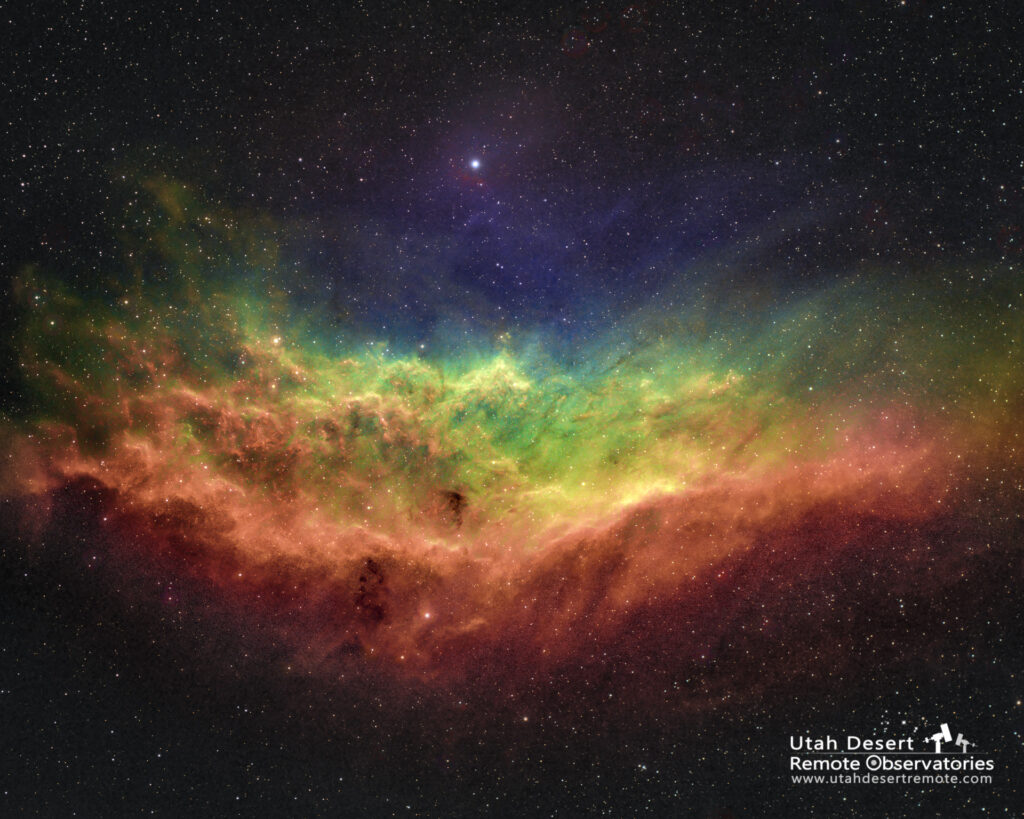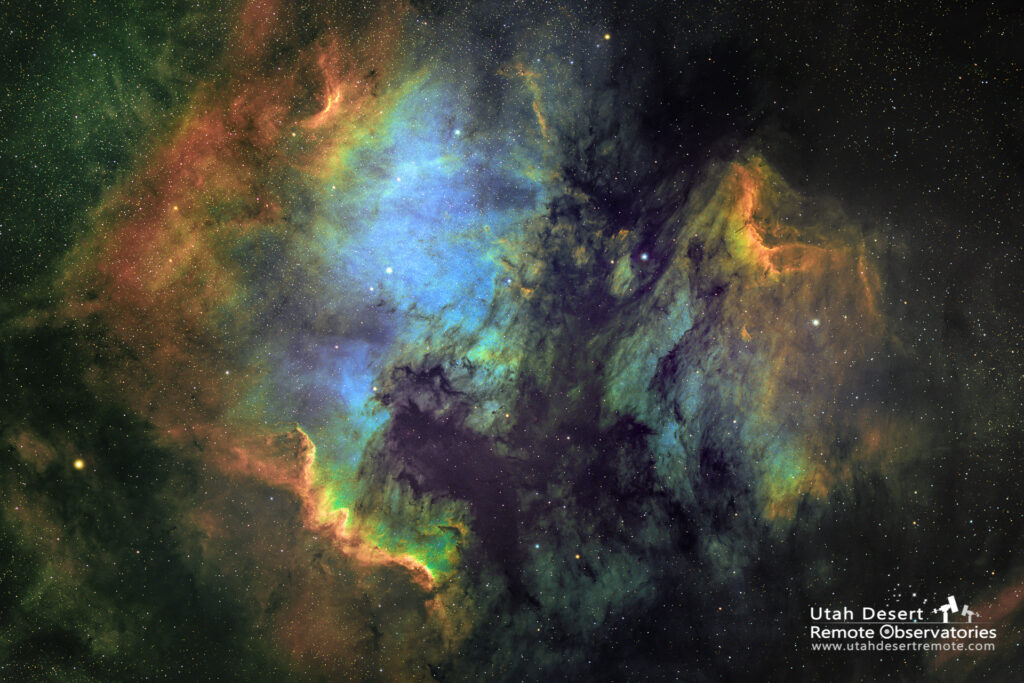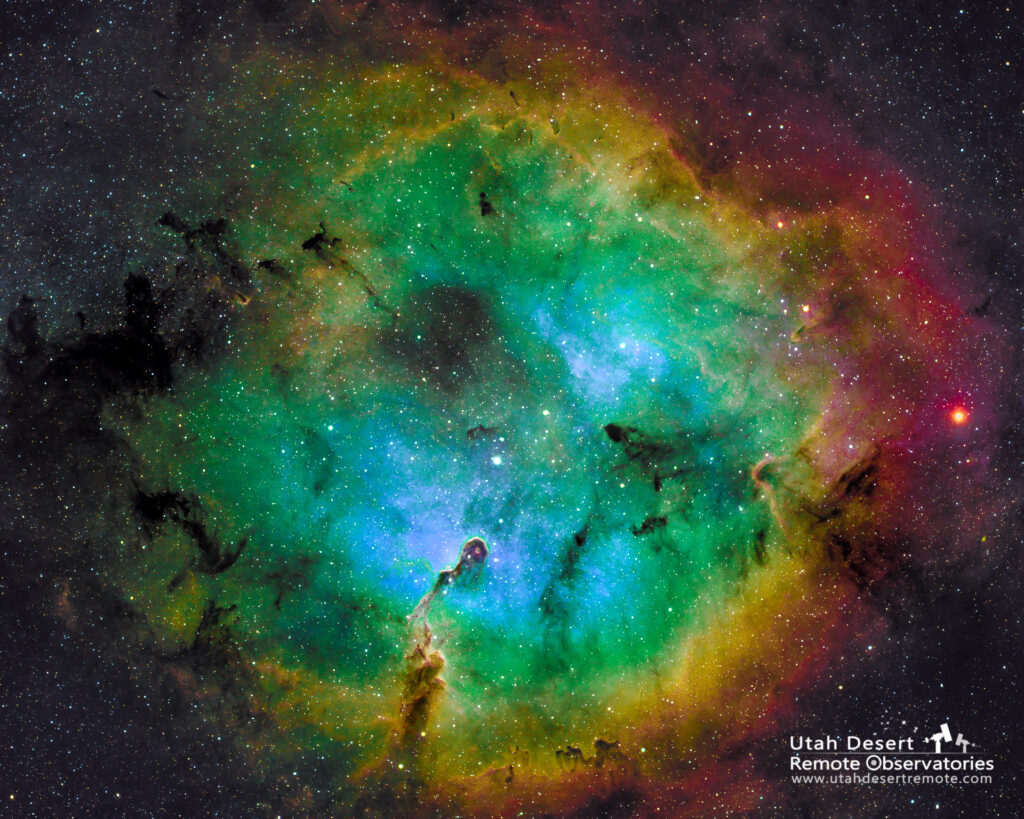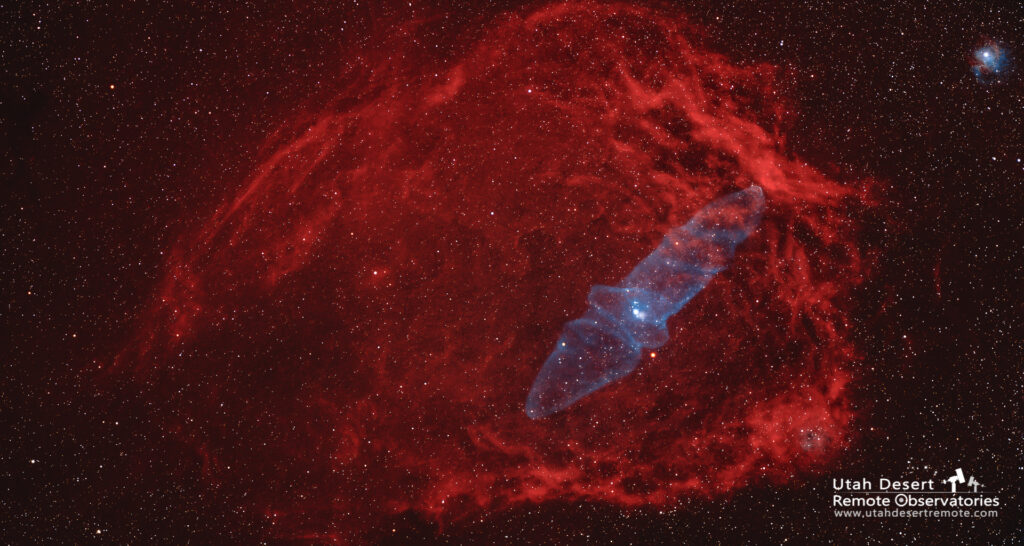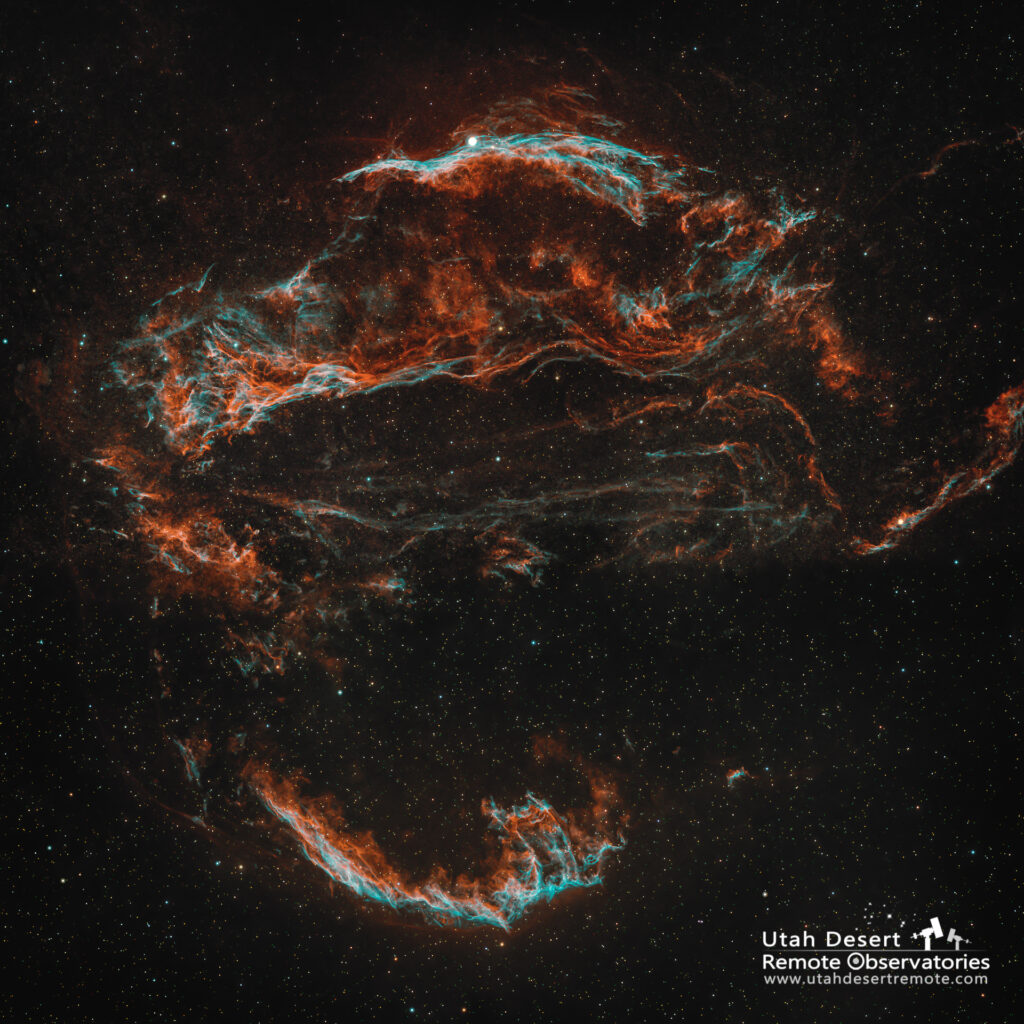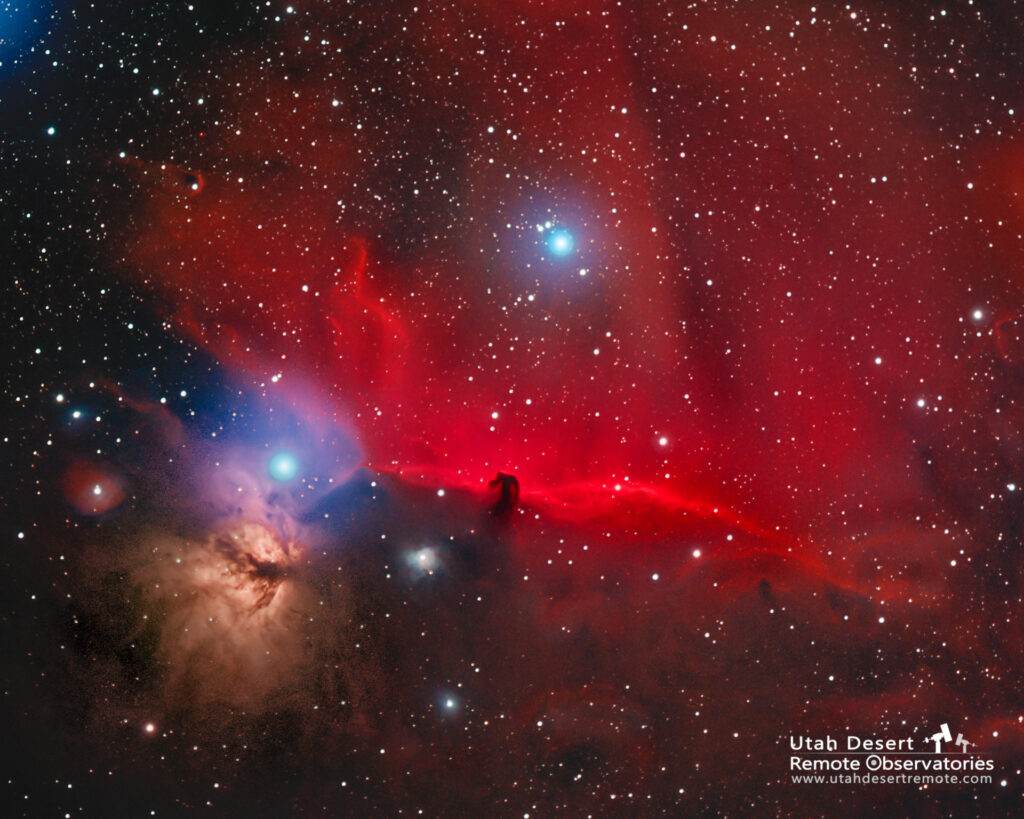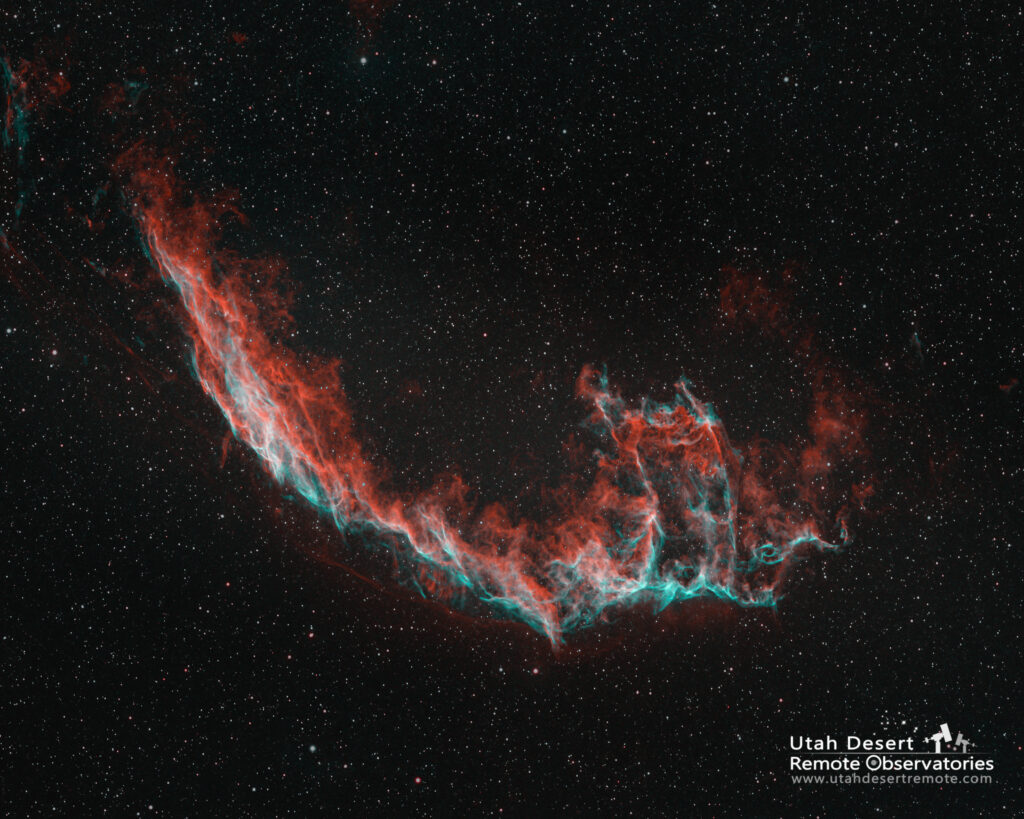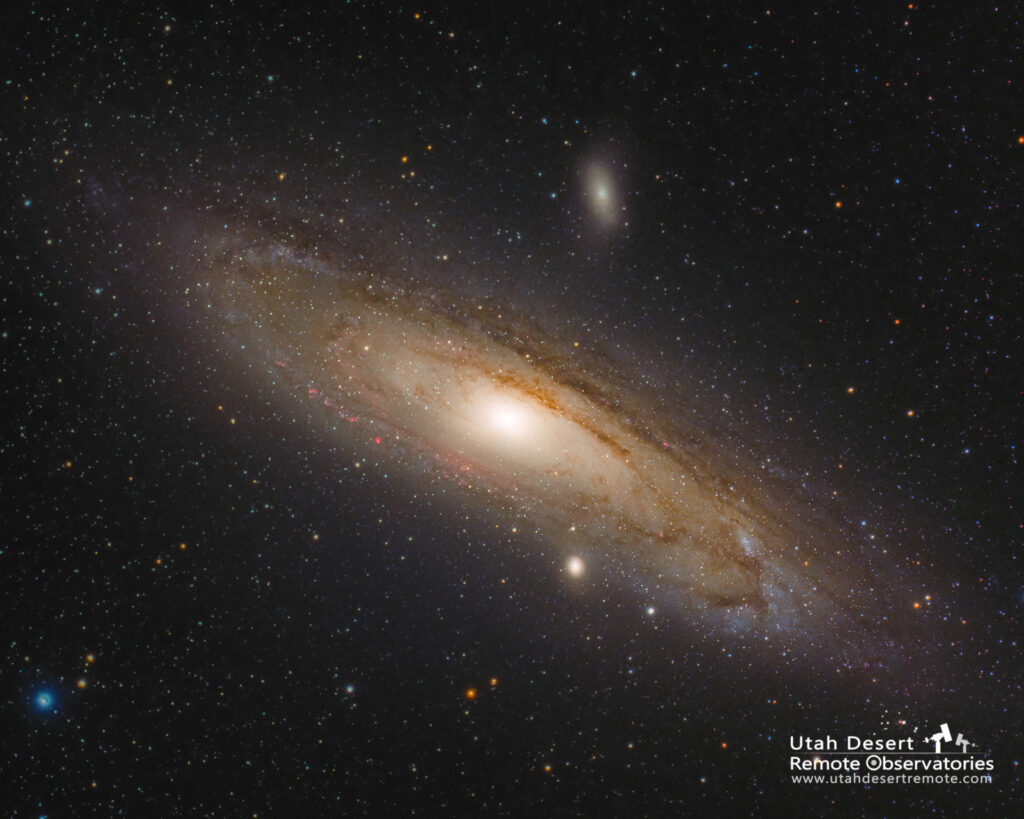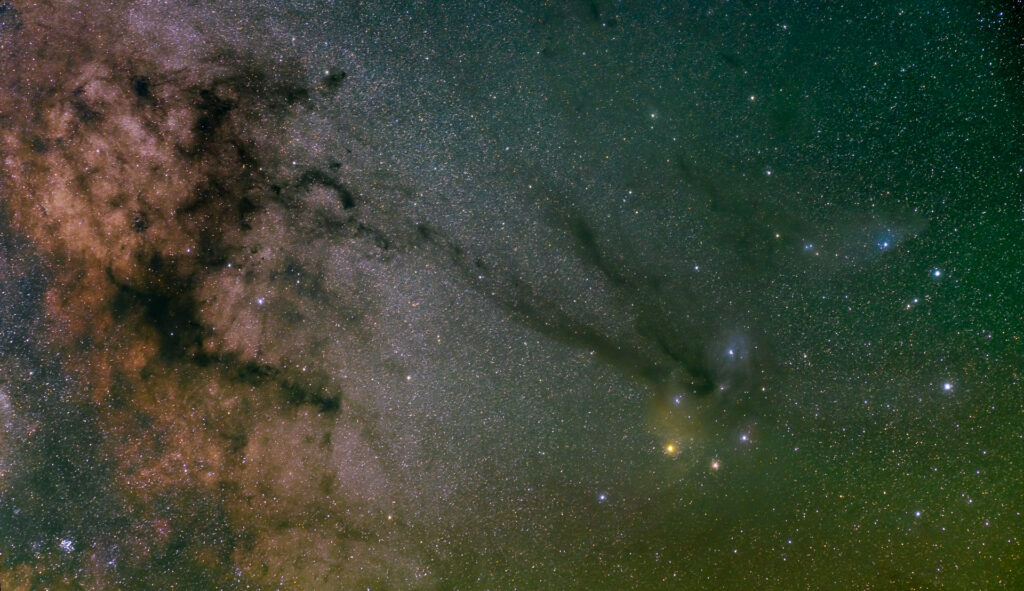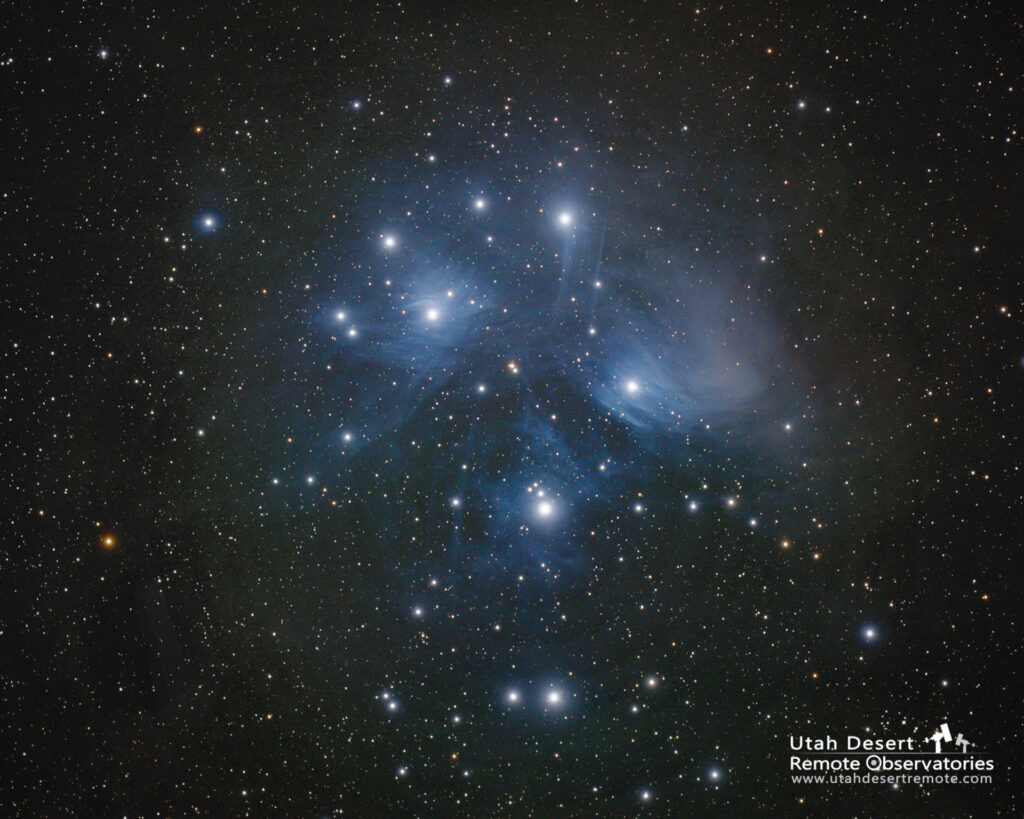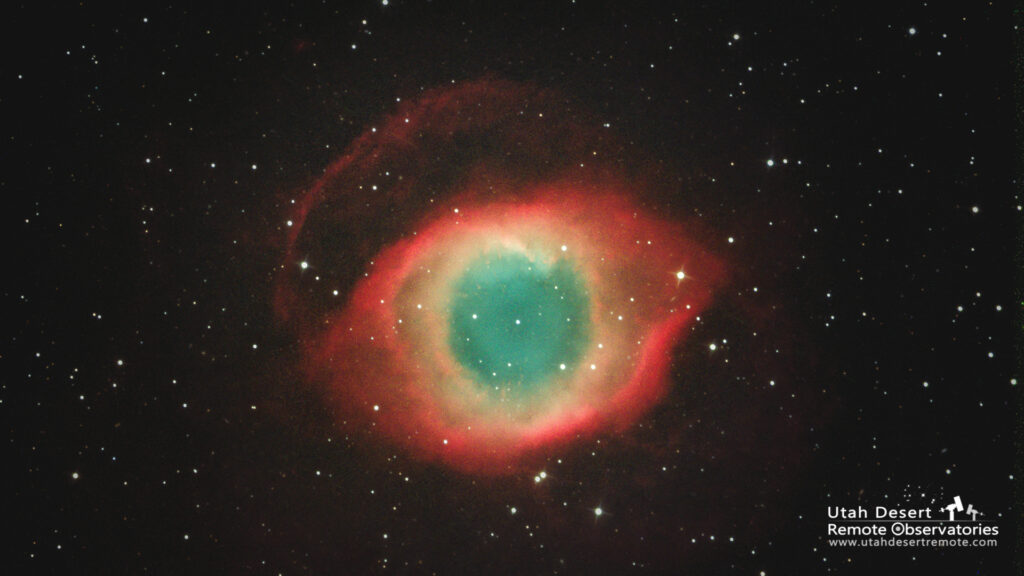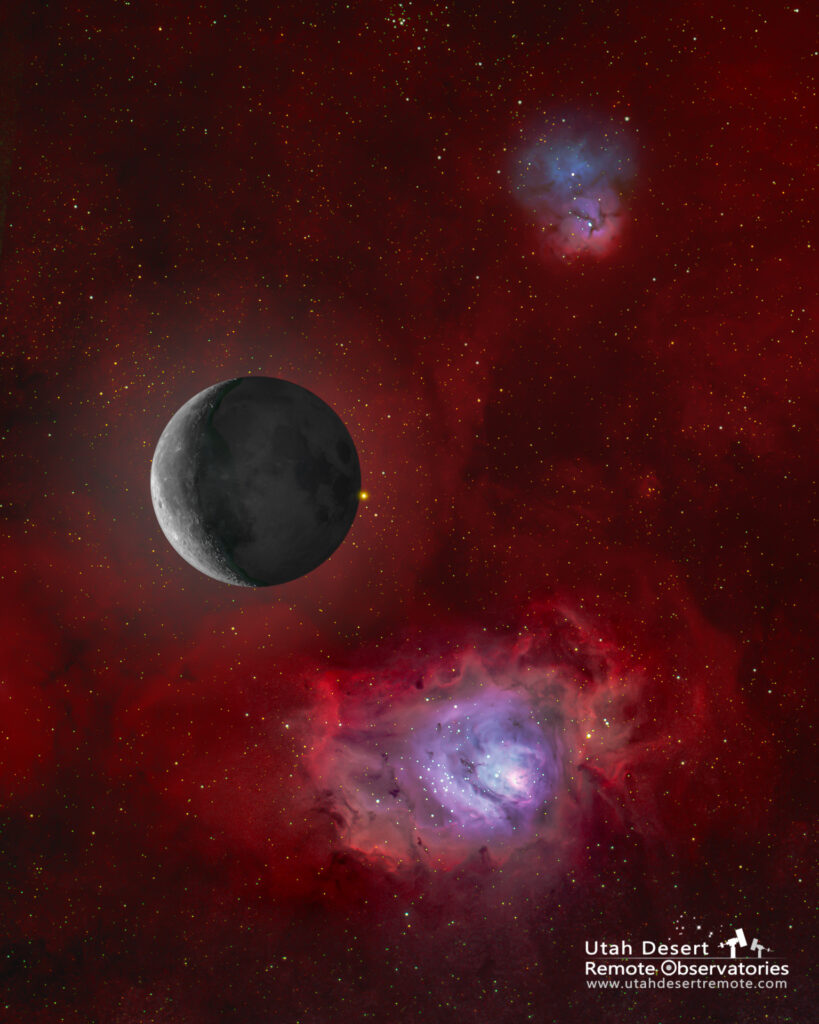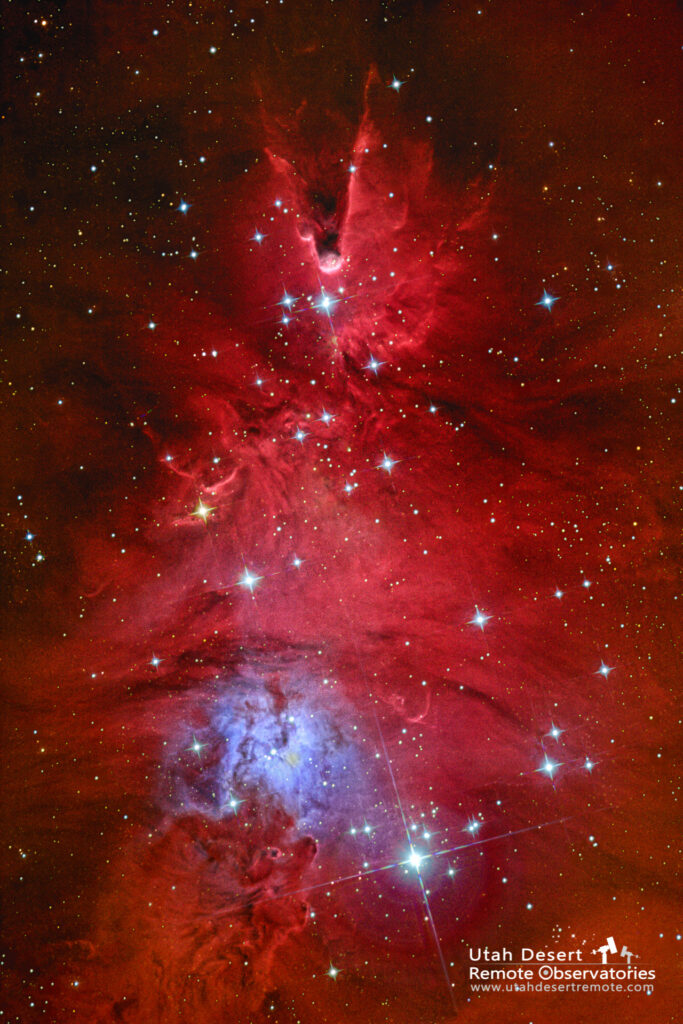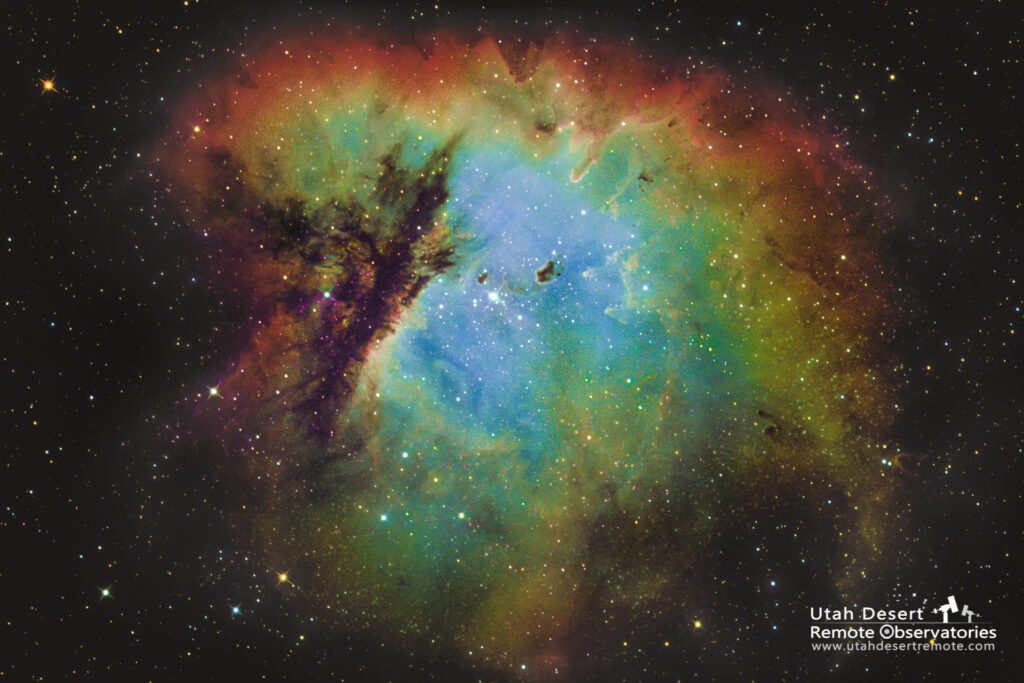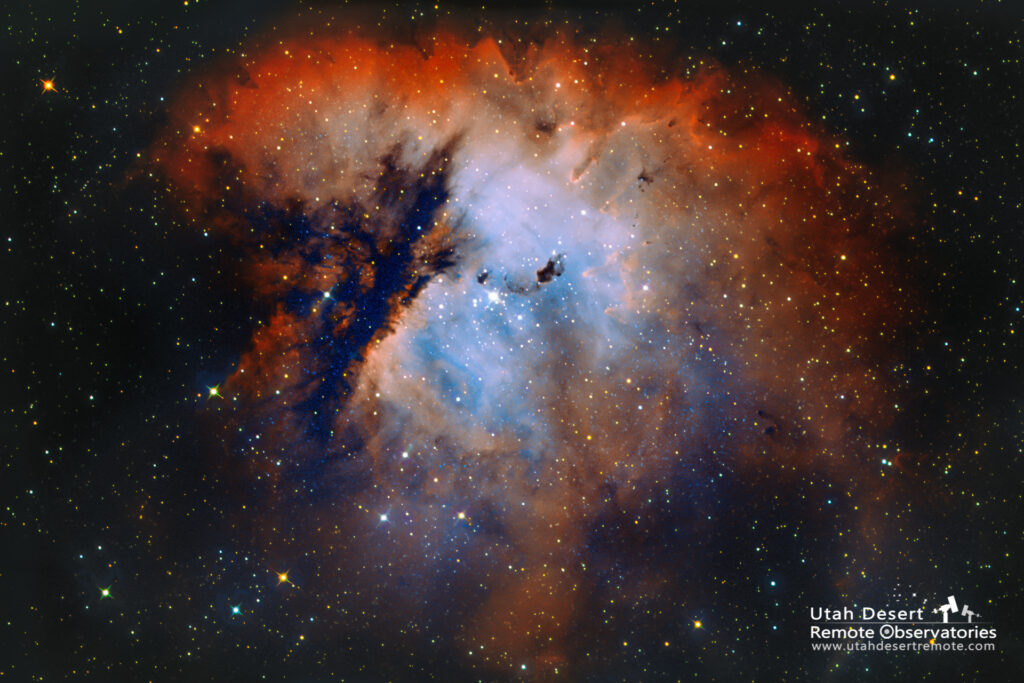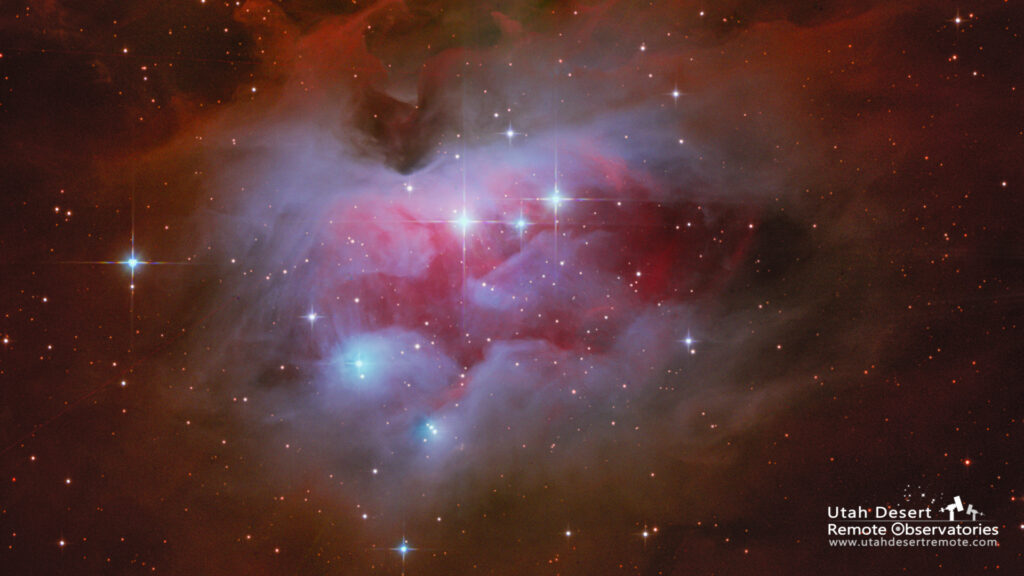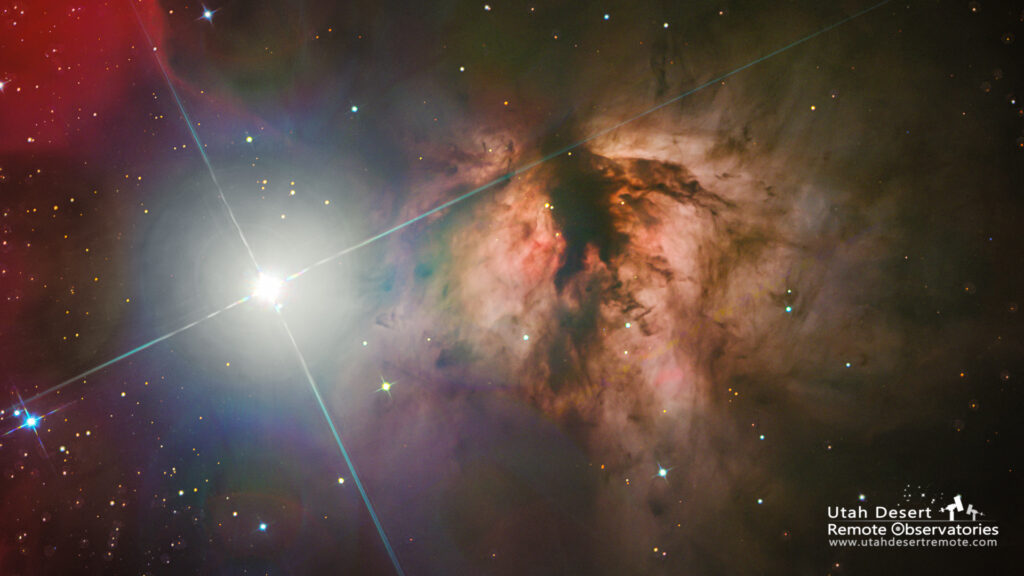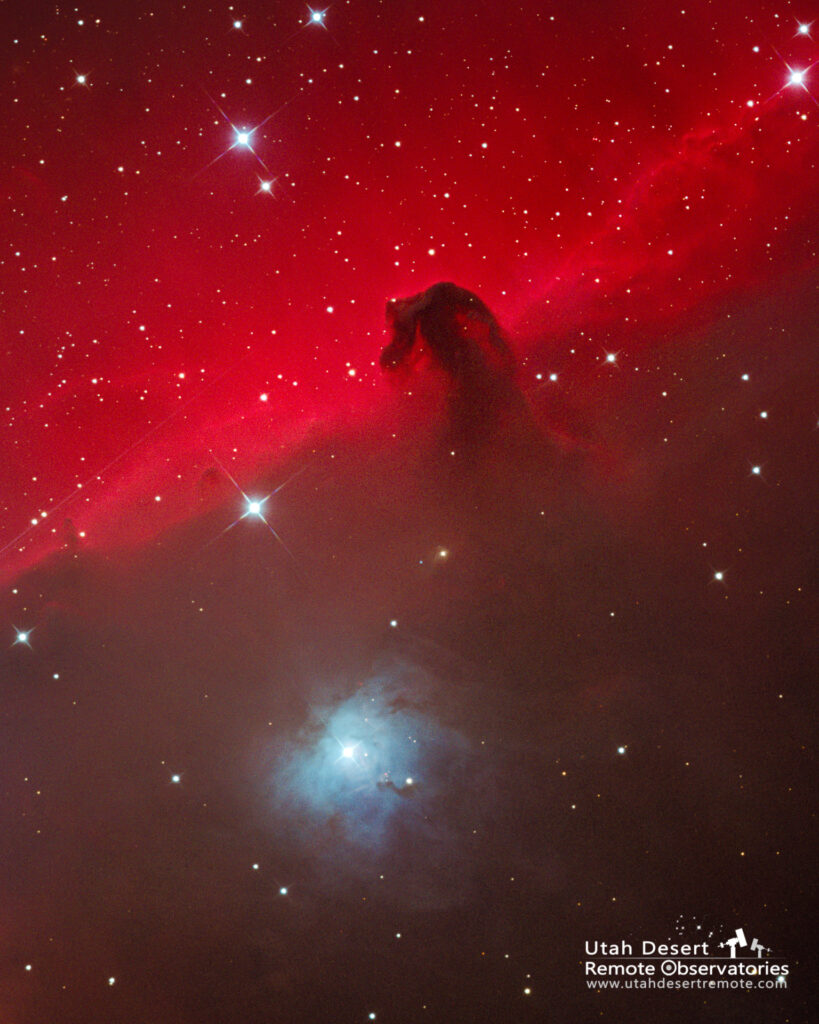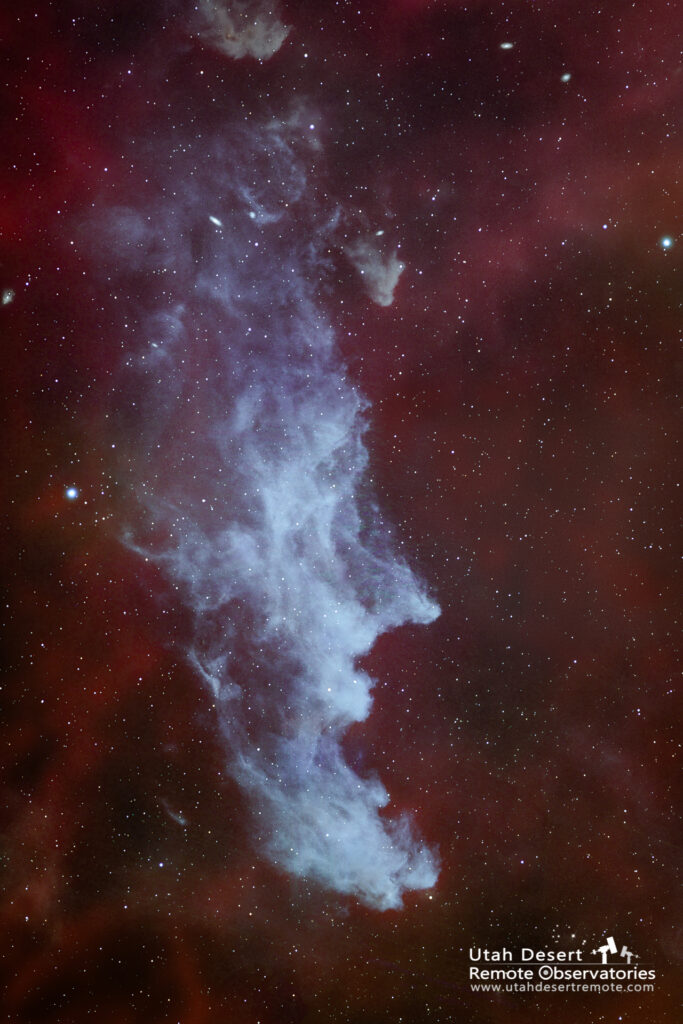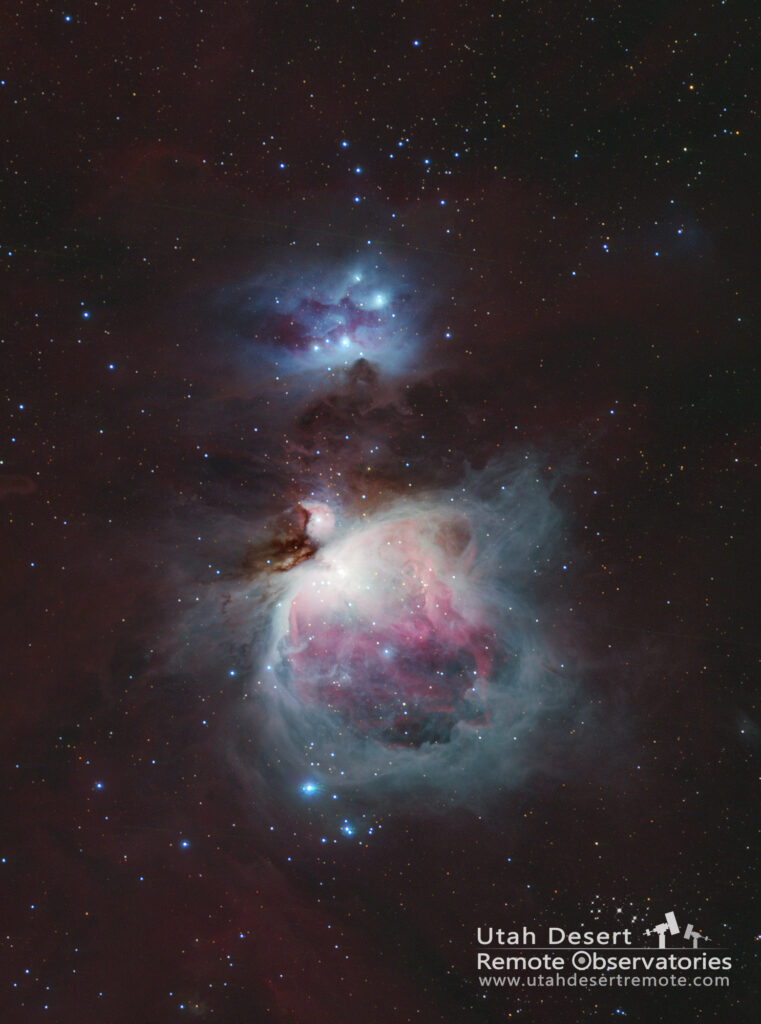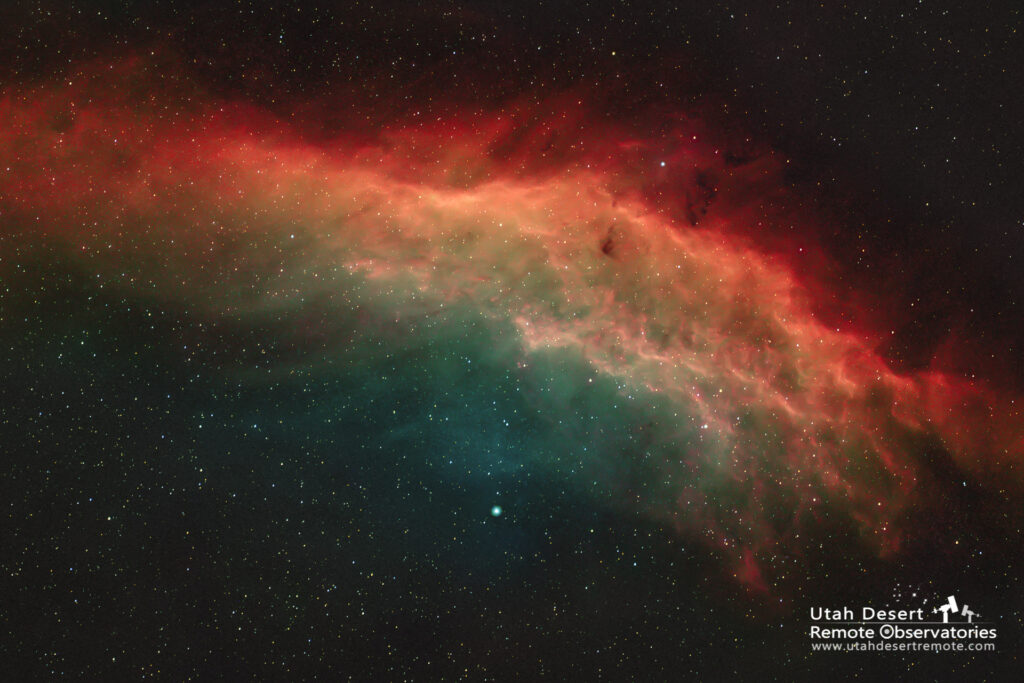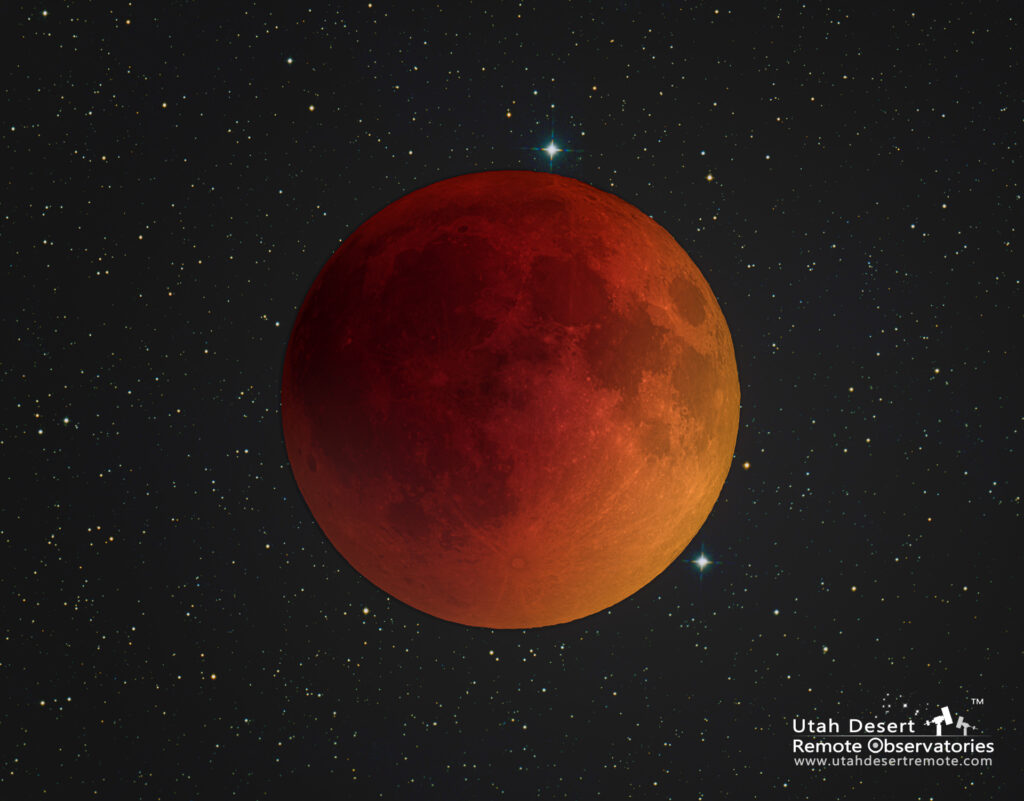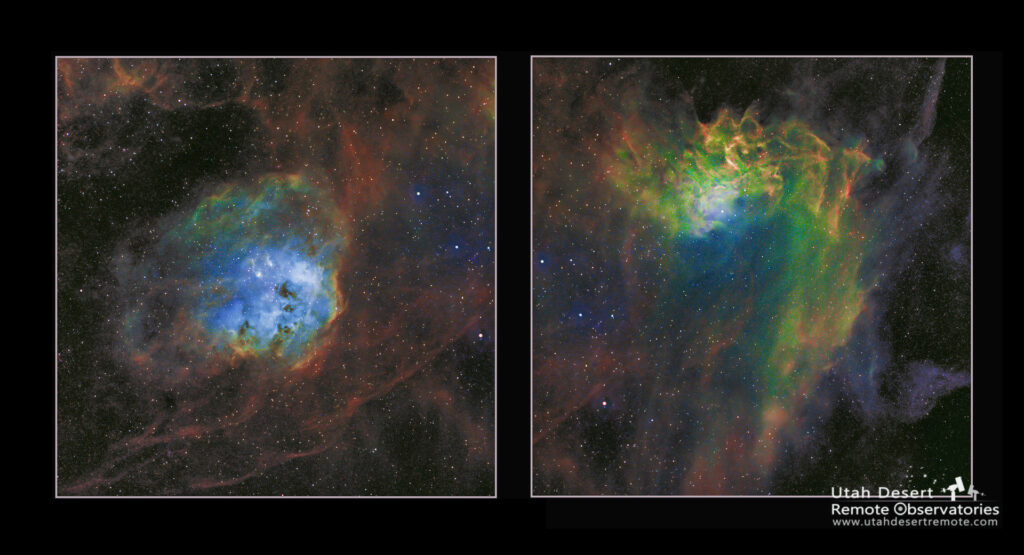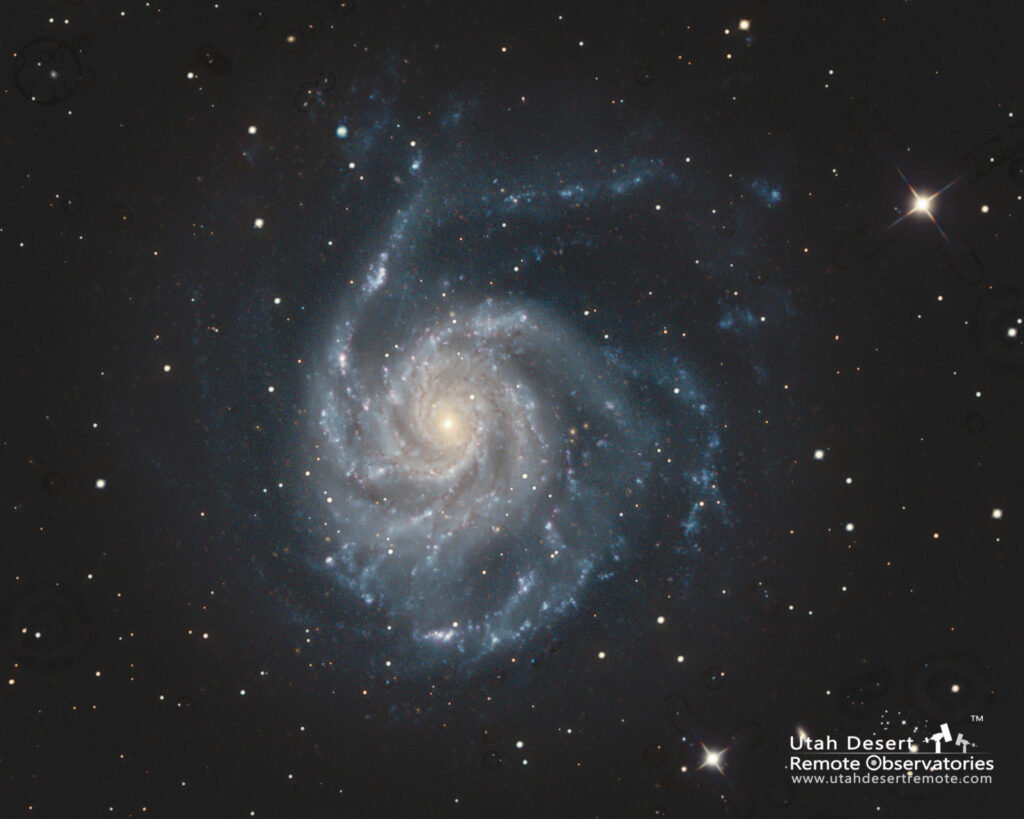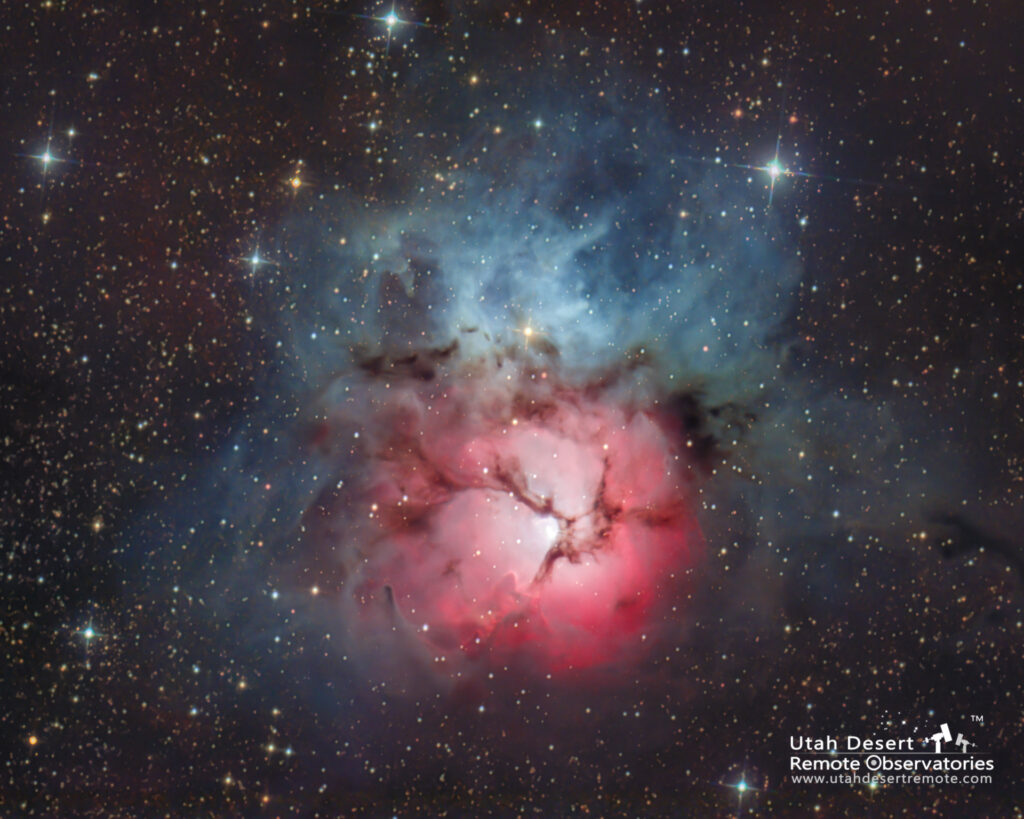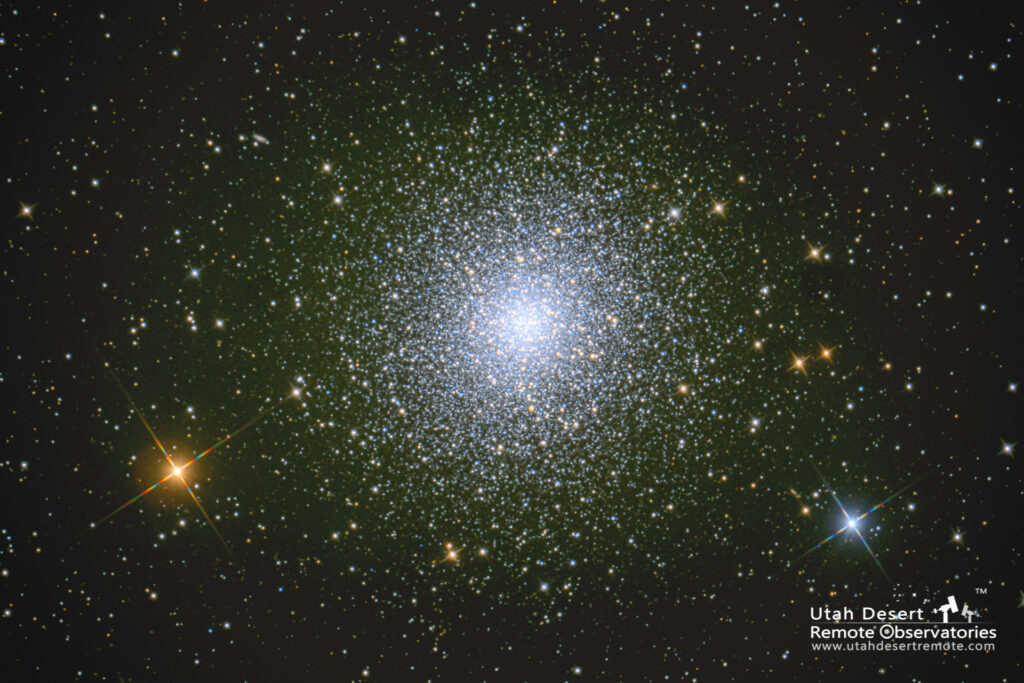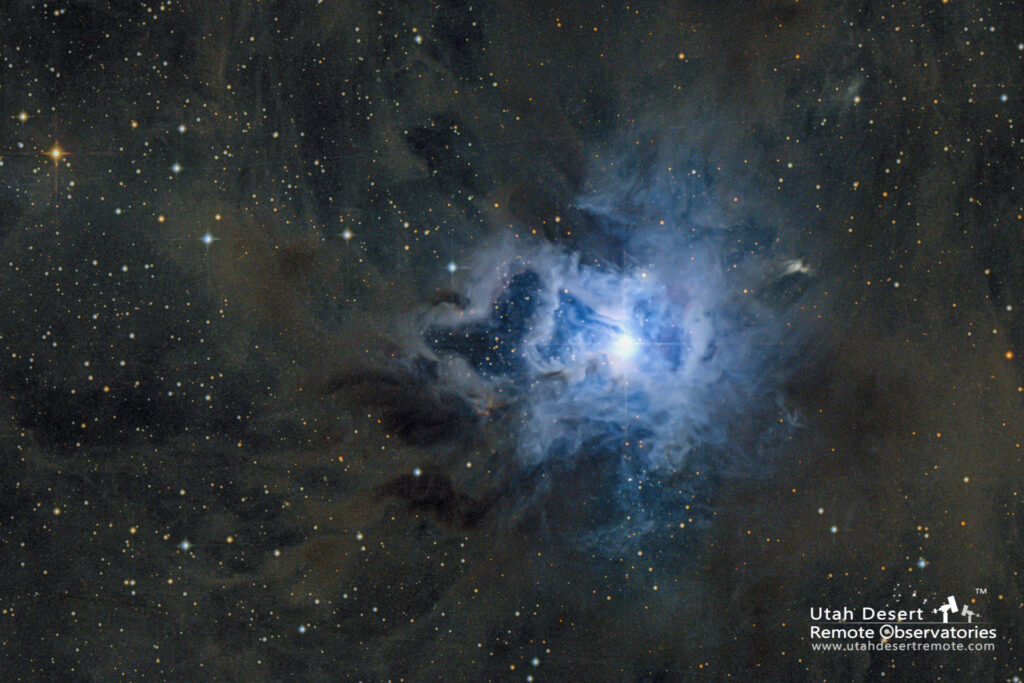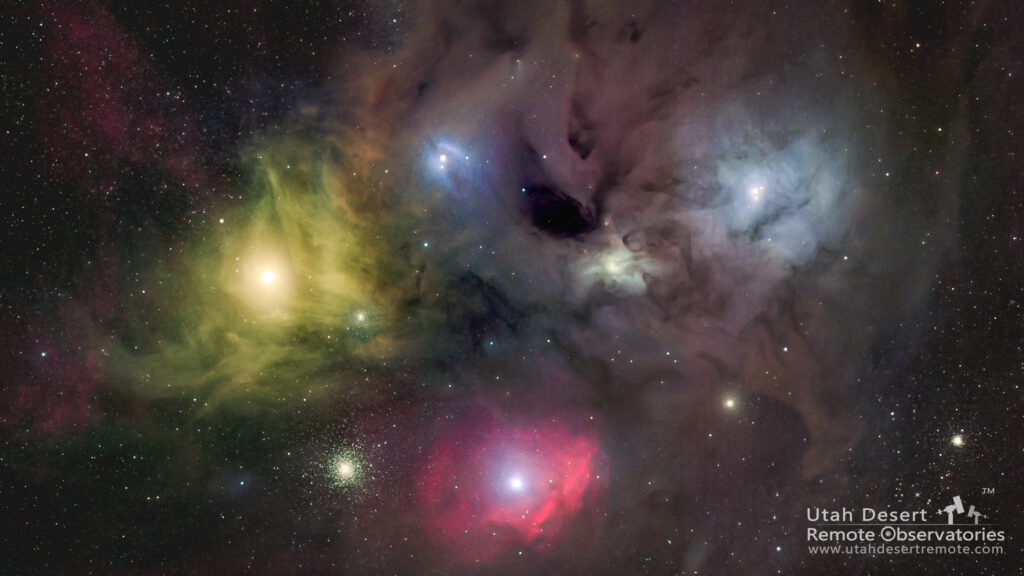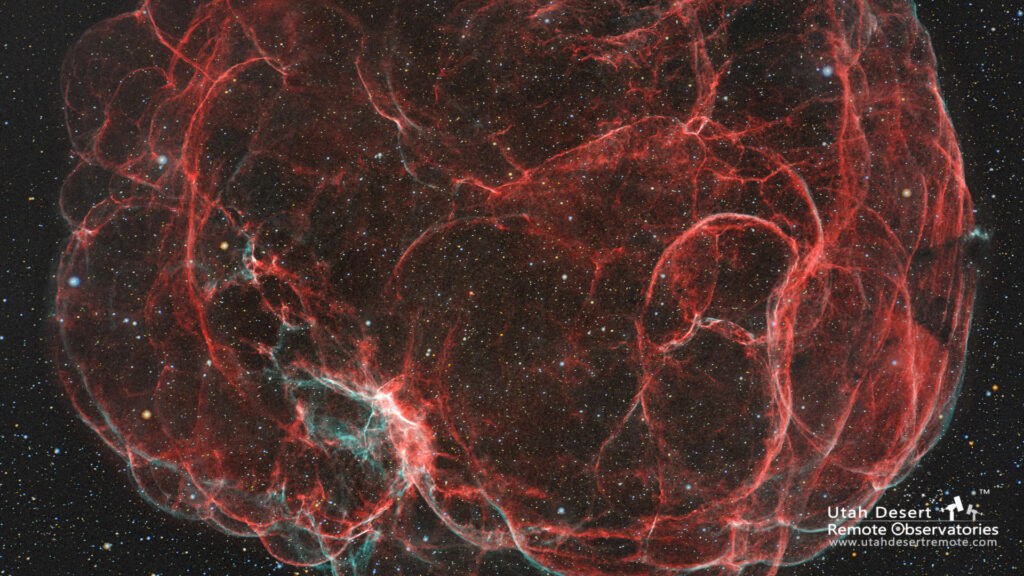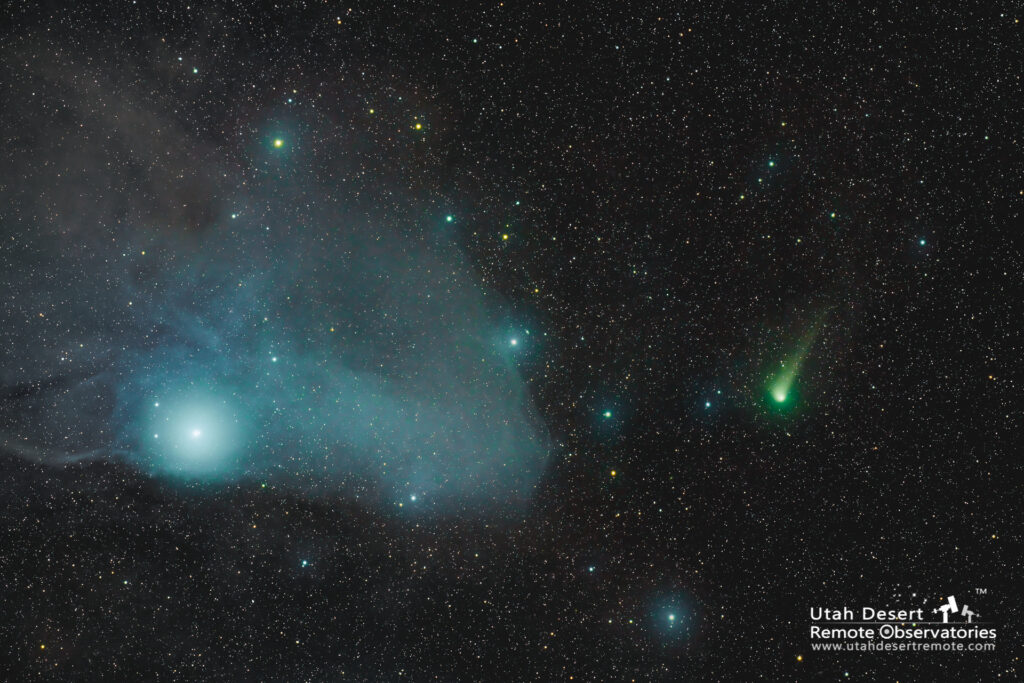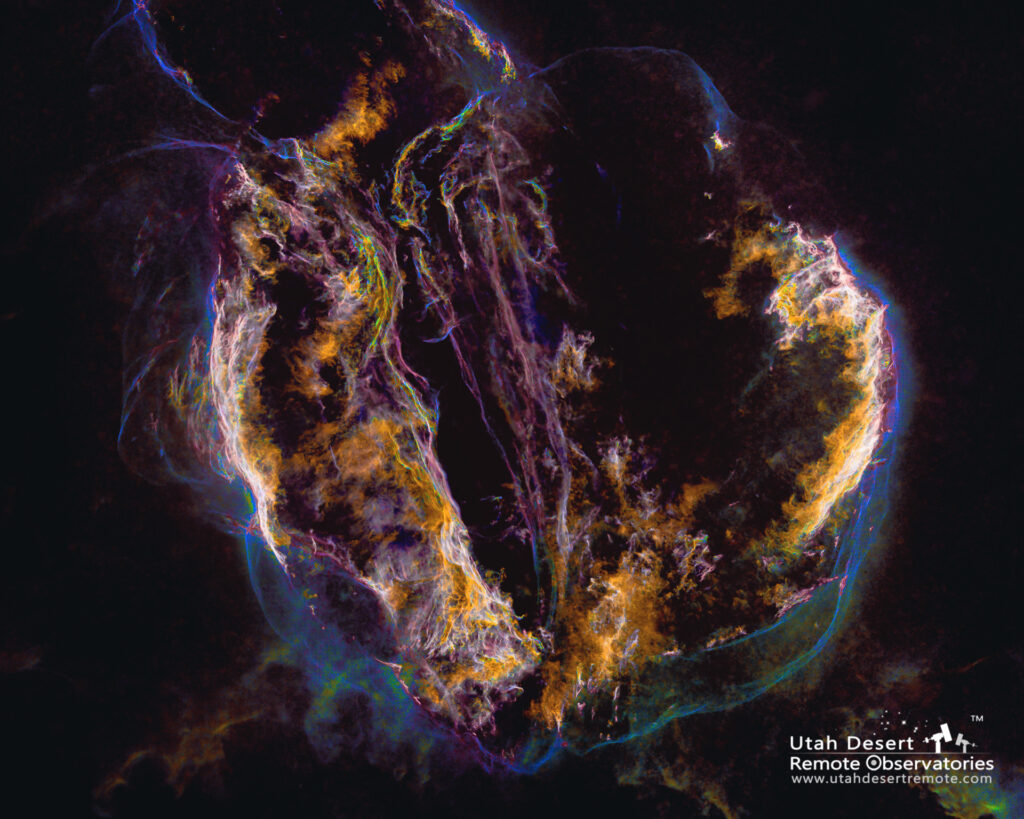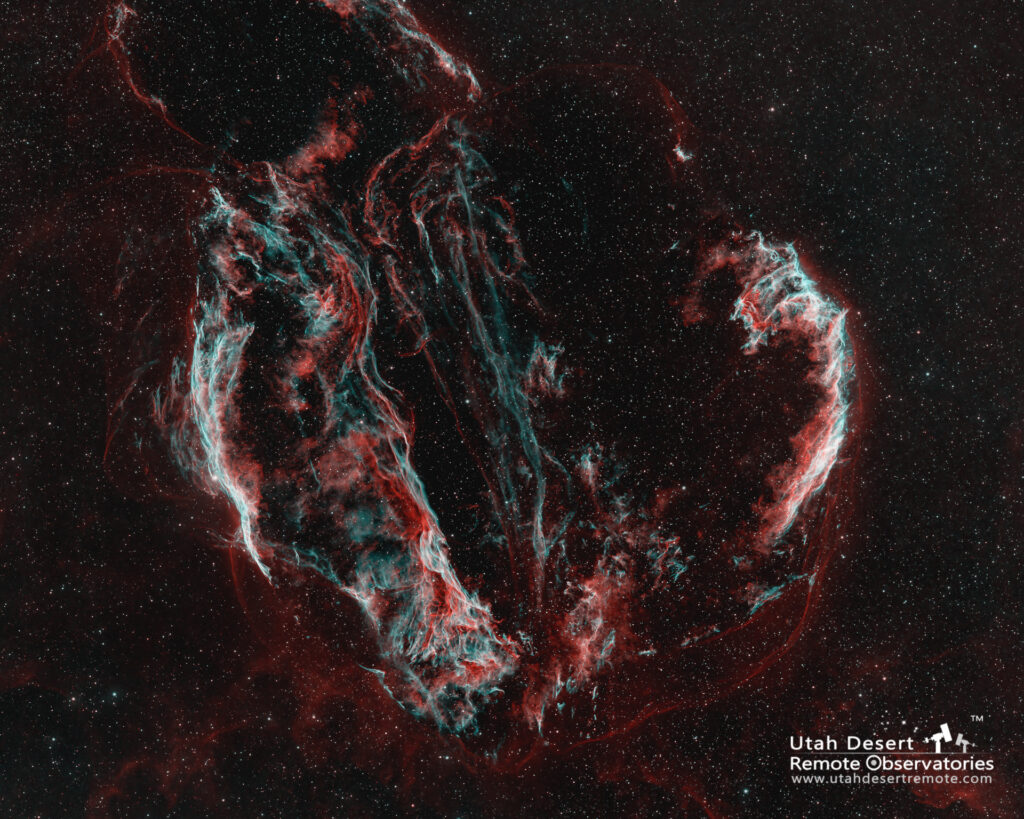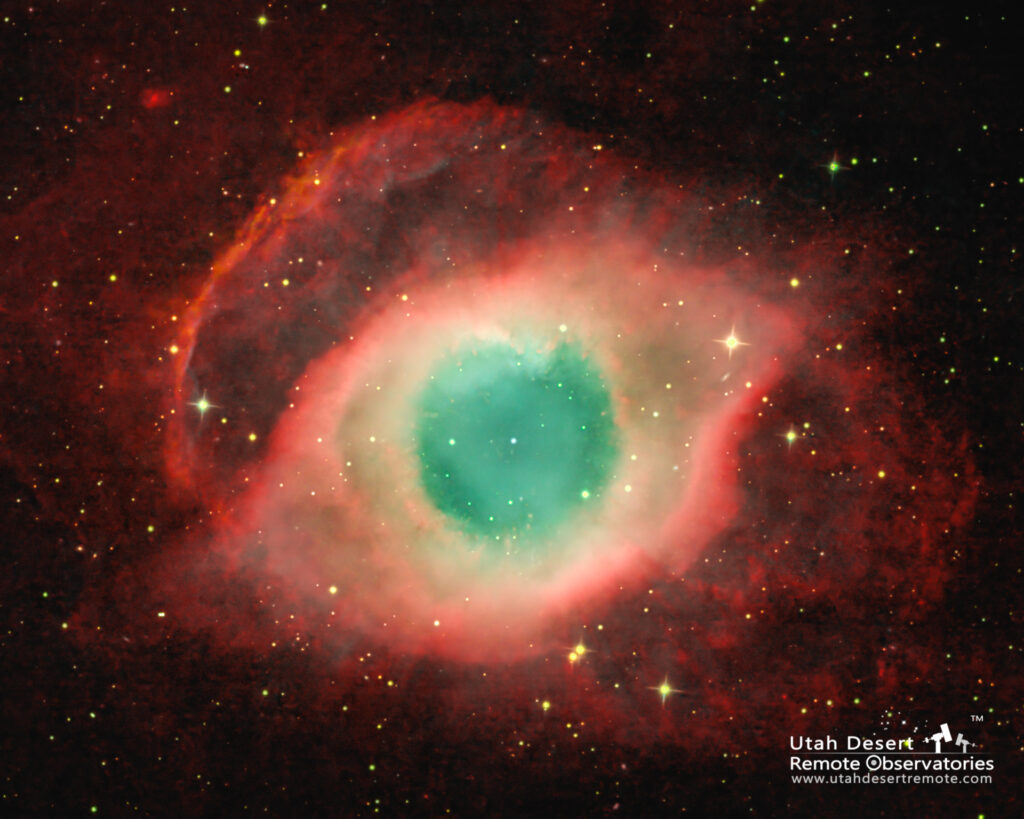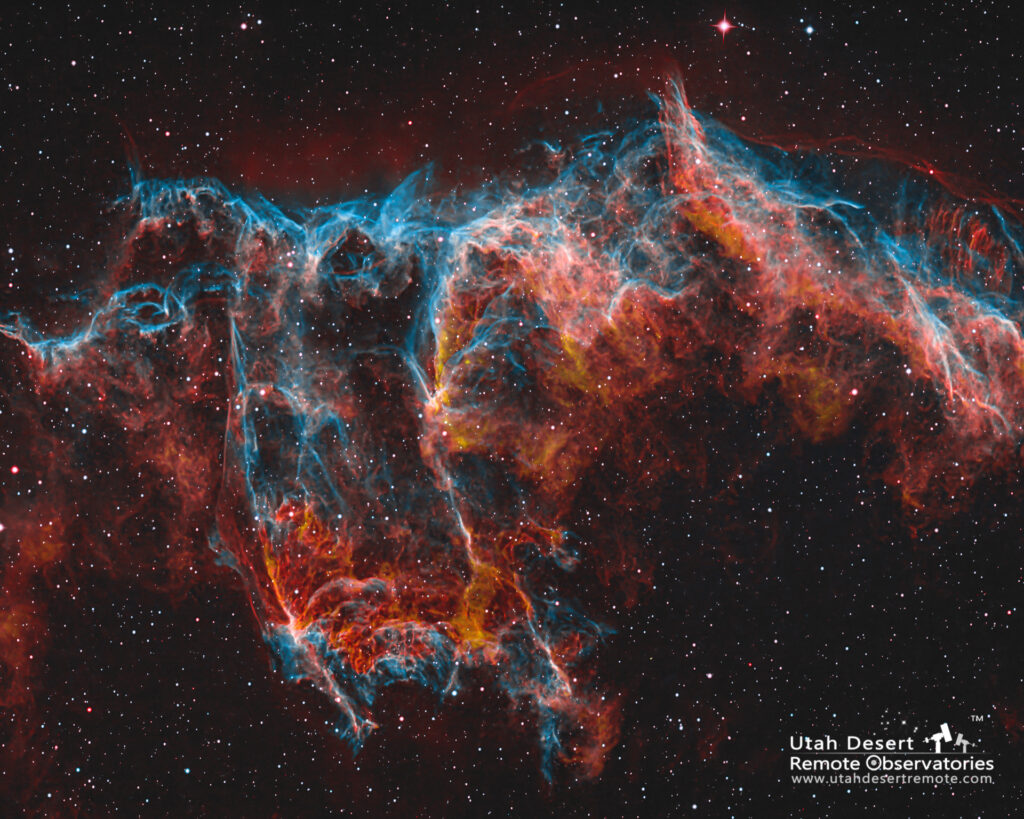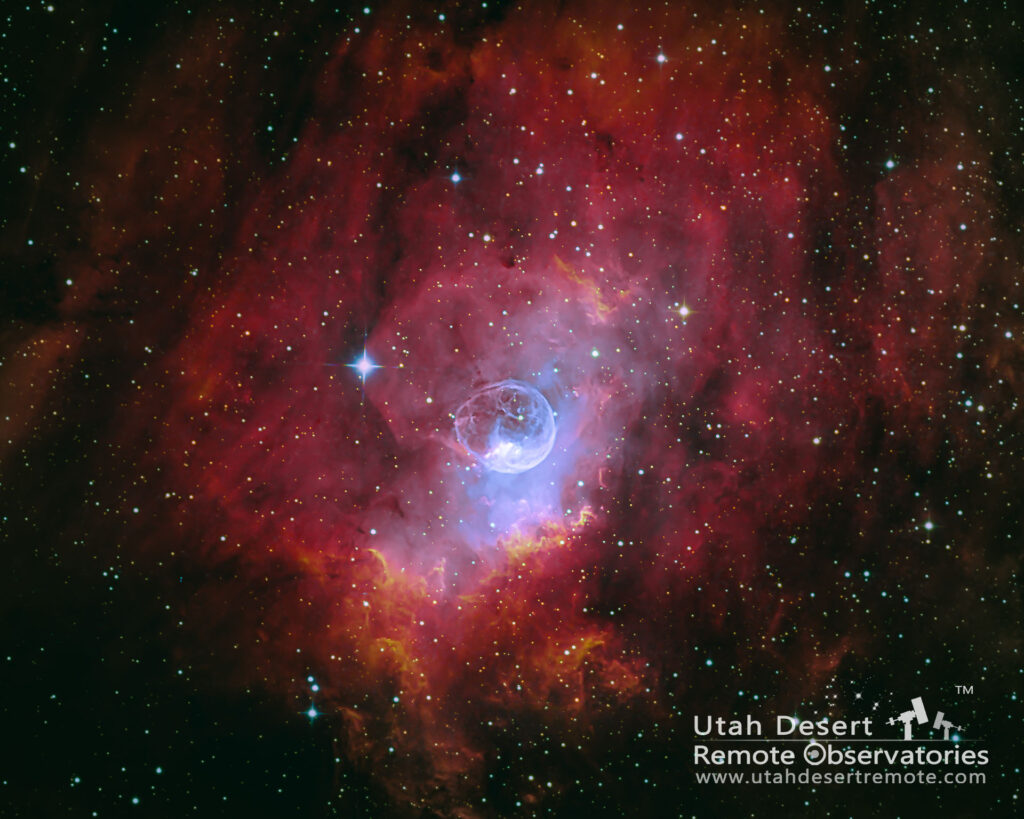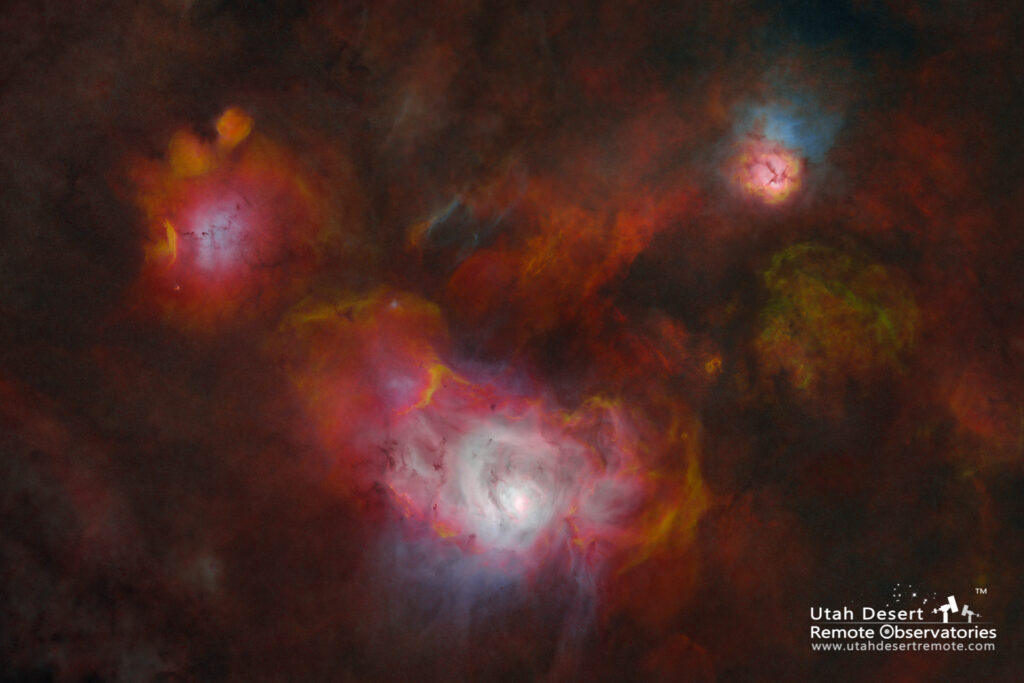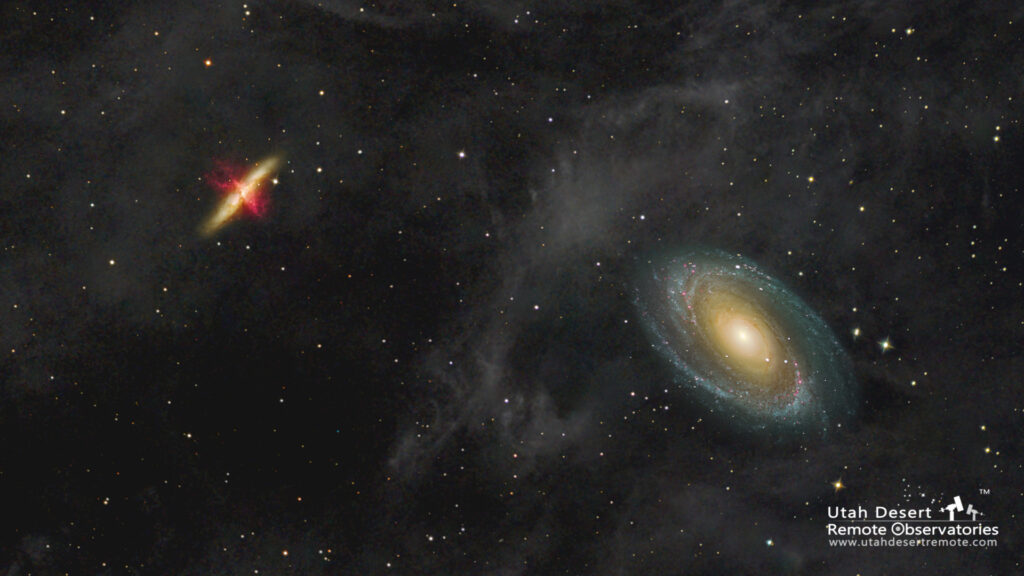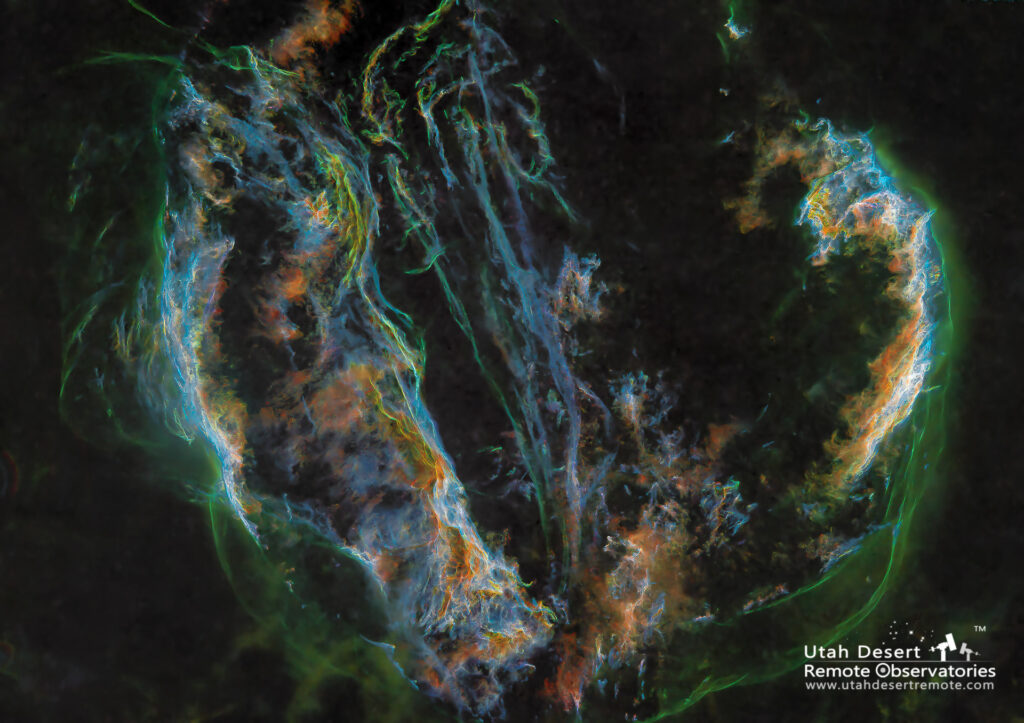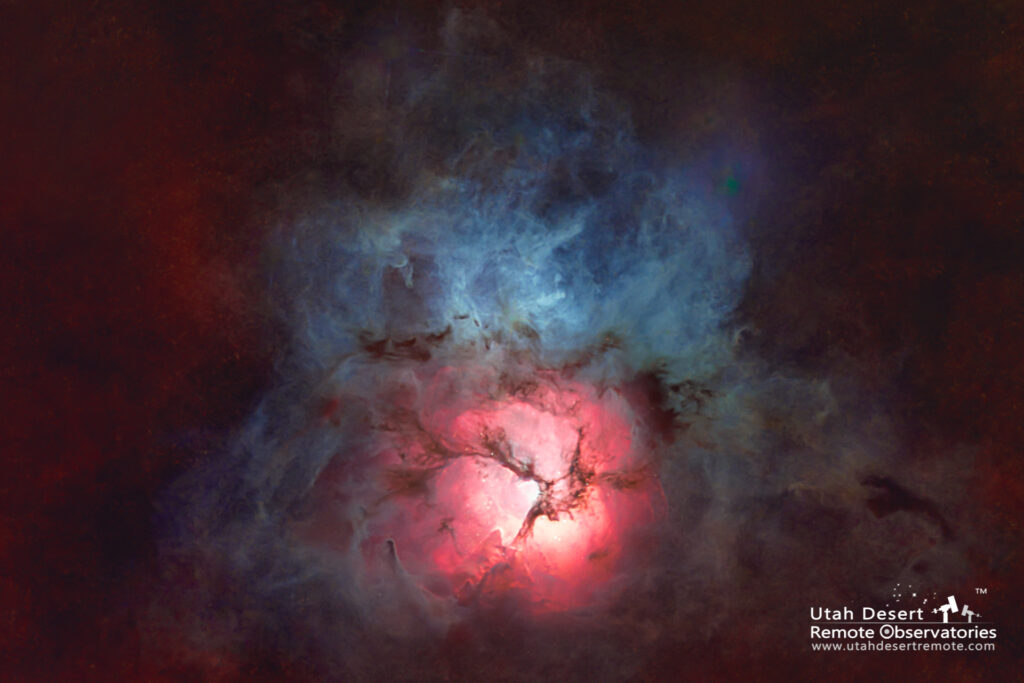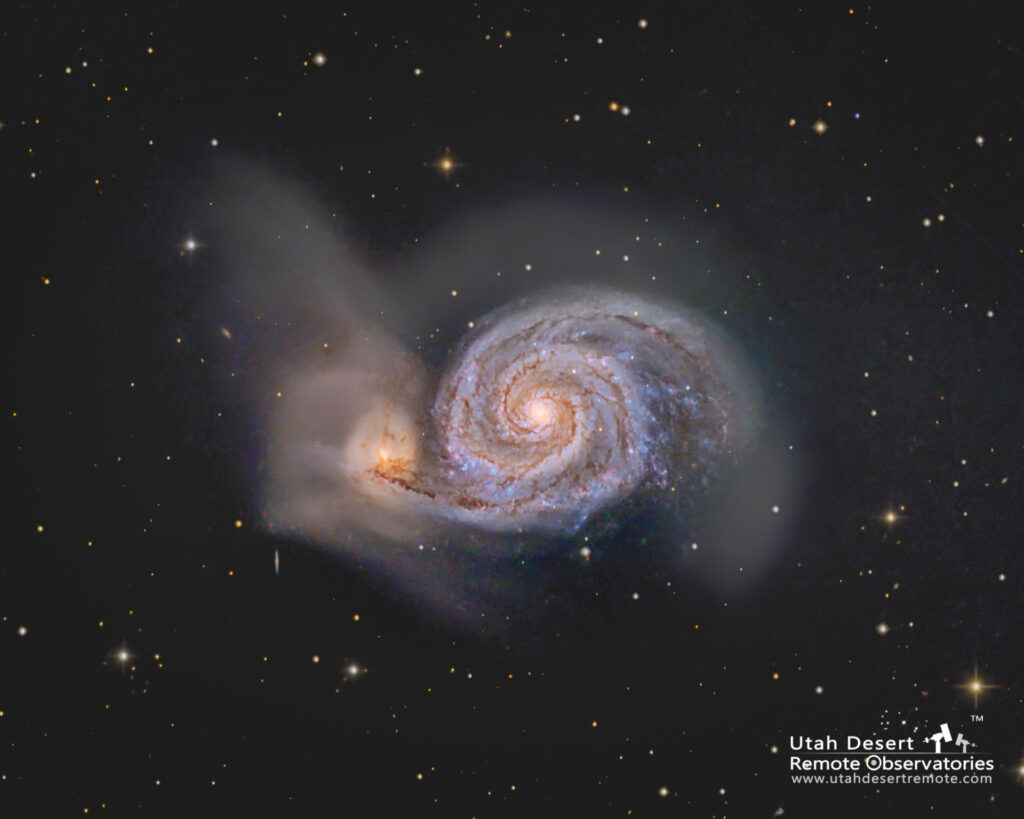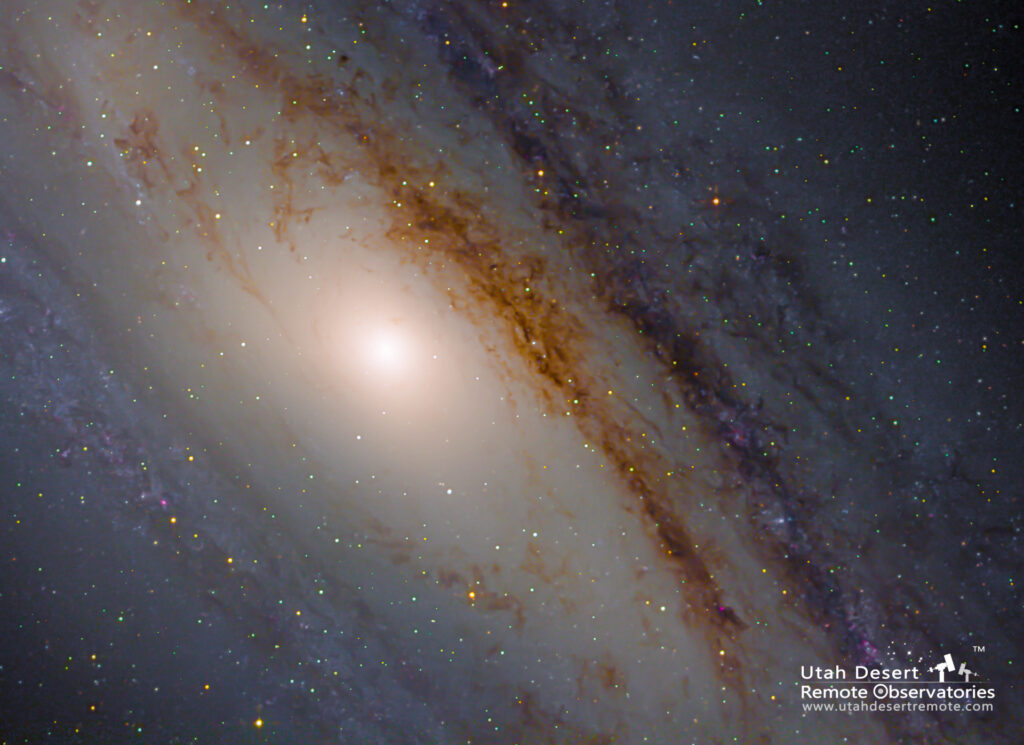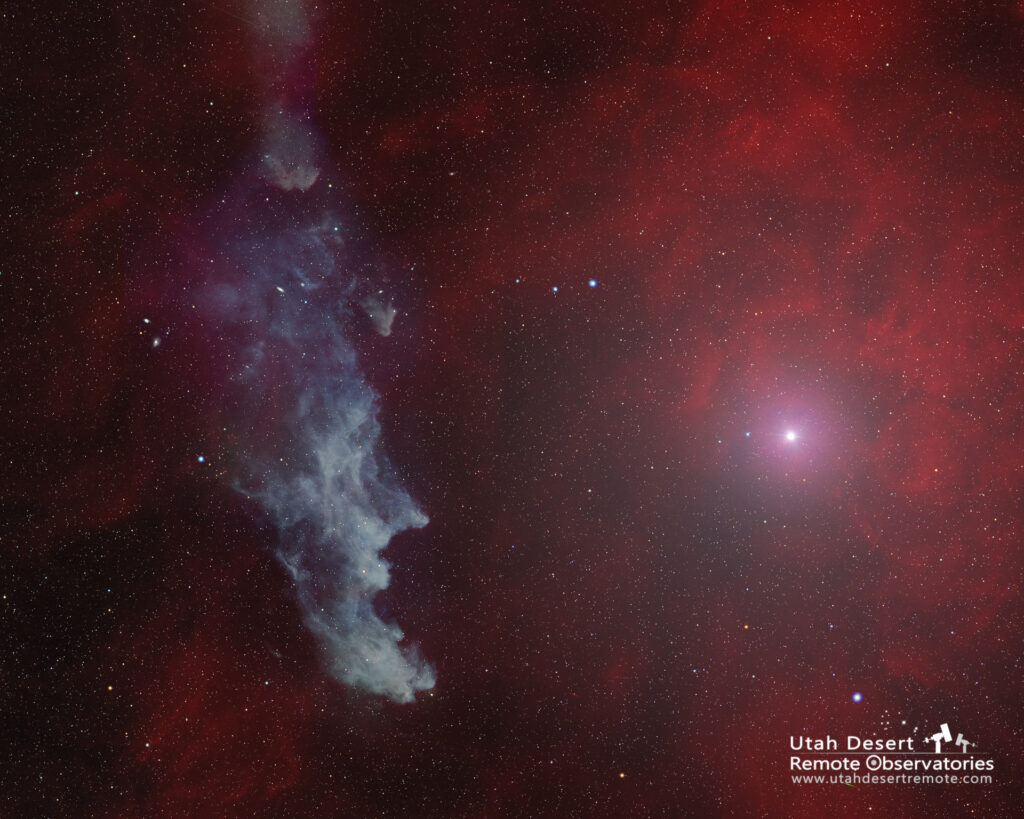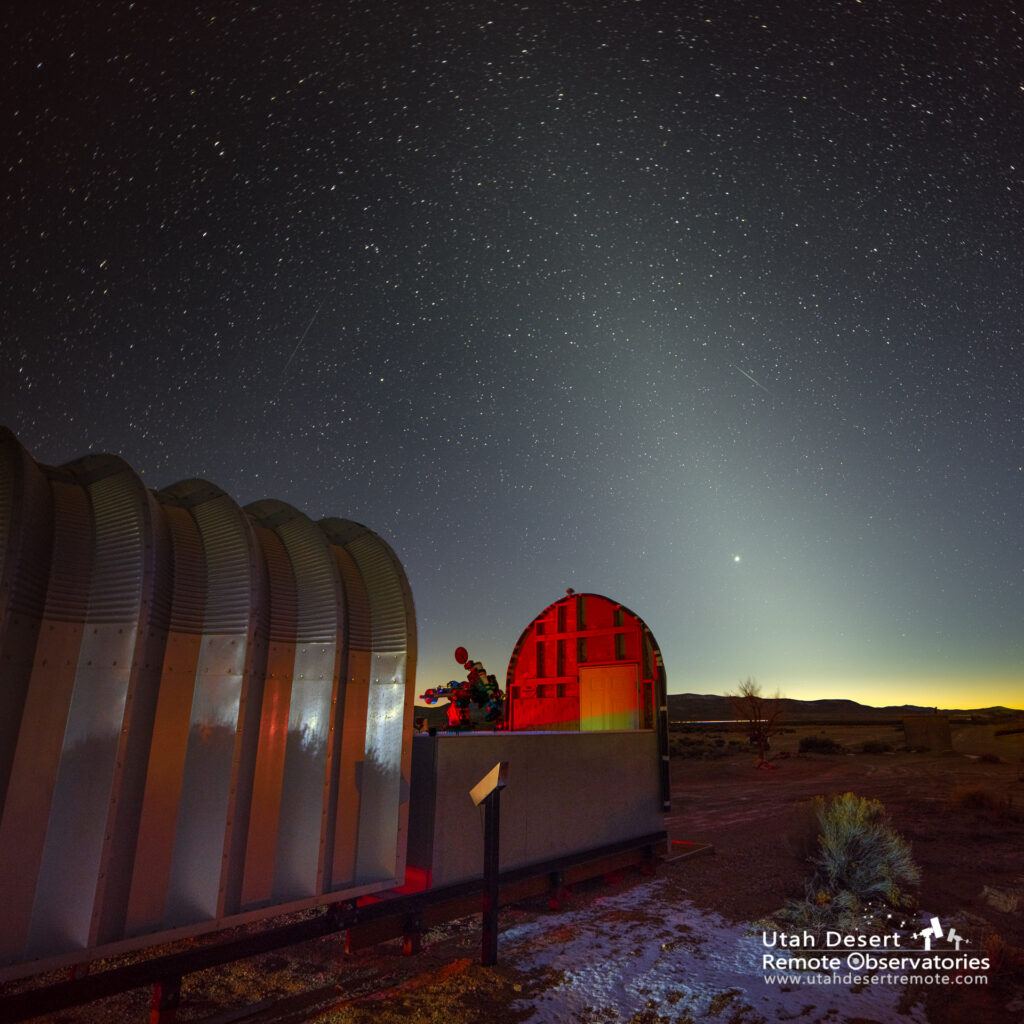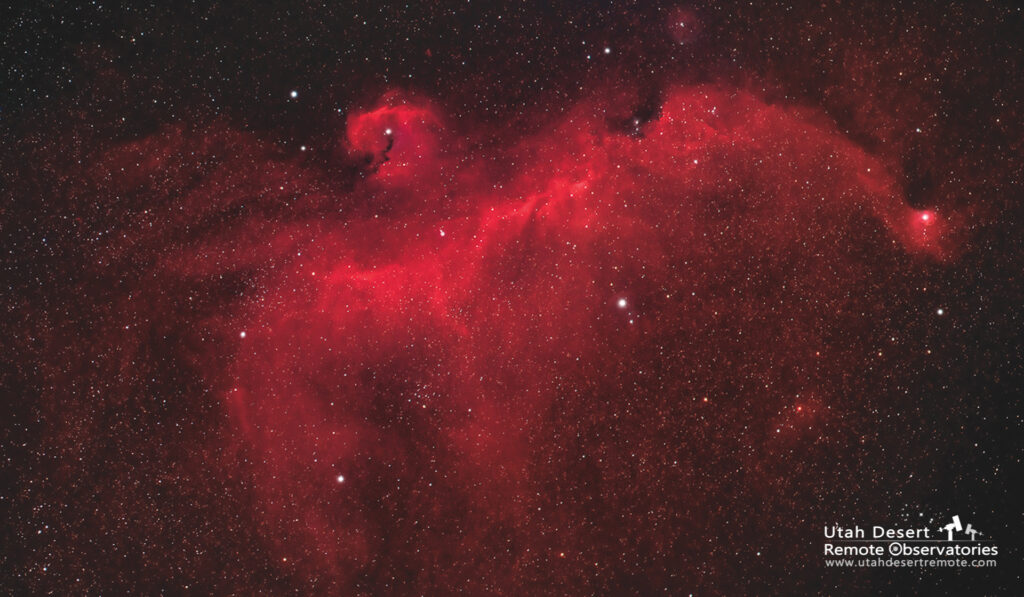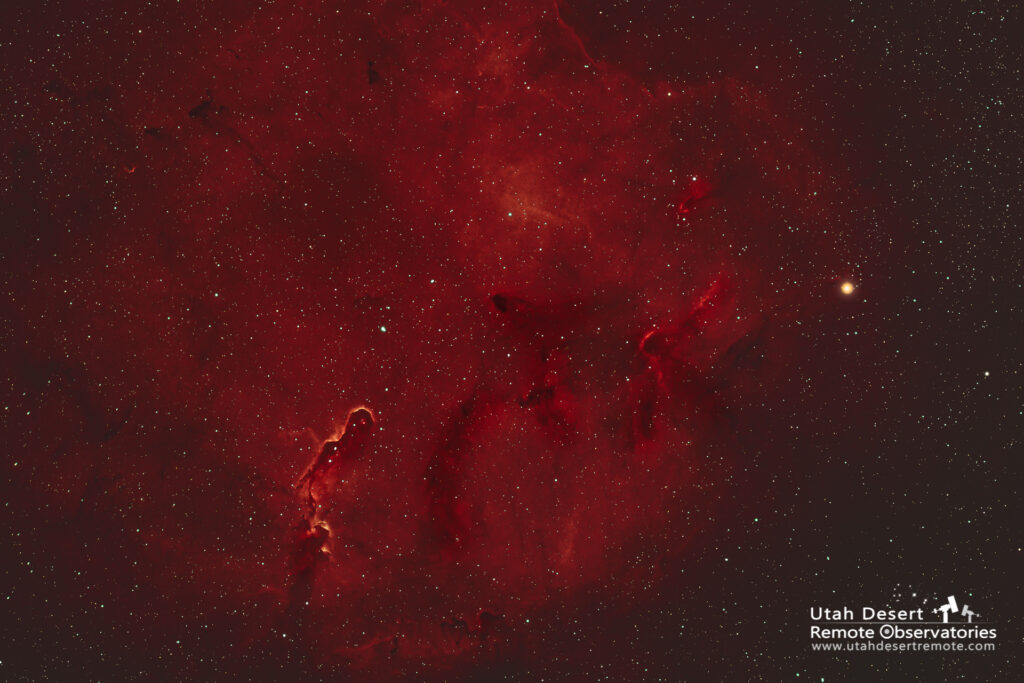Fine Art Astrophotography by Craig Stocks for Utah Desert Remote Observatories
One of my goals with astrophotography is to present astro images just as you would any other fine art photo. People look at a landscape photo and simply appreciate it for what it is without being concerned with the geology or history of the scene. Likewise people can enjoy an image of a flower, a piece of fruit or even a nude without getting too wrapped up in the back story. Astronomy images can have the same impact. Yes there is scientific information in the image but there is also sheer beauty in the colors, textures and shapes.
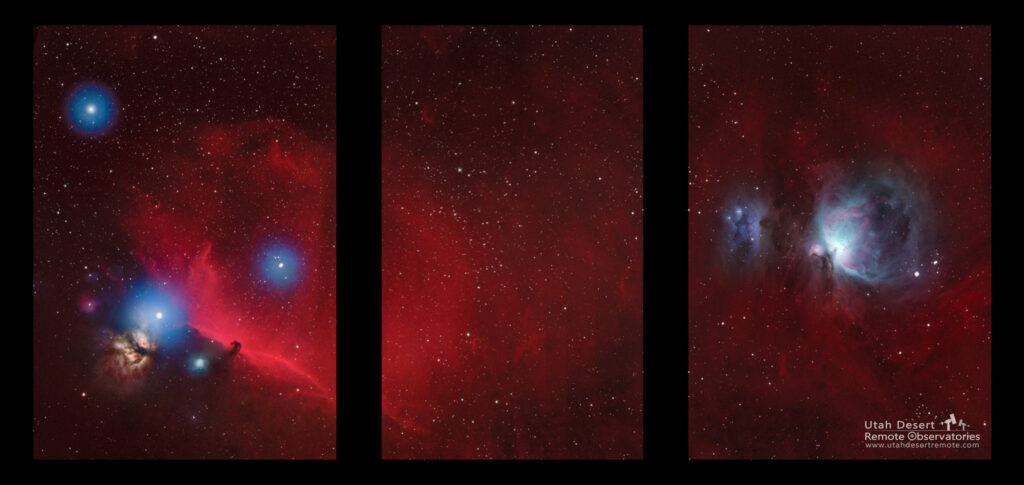
Post processing is a major factor in astronomical imaging. First, nearly all images are a composite of some sort. All of the images here are combinations of numerous individual frames that are combined and averaged to reduce noise which allows faint details to be revealed. It’s also common to photograph with a monochrome camera and special filters that pick out just the colors of certain gases such as hydrogen, oxygen and sulfur. That allows the photographer/artist to make choices during post processing to decide how the various elements should be color mapped to best reveal the composition of the feature but also to create combinations of pleasing color.
There are three common approaches to color mapping. Many images use what is commonly referred to as the Hubble Palette where sulfur, hydrogen and oxygen are color mapped to red, green and blue respectively. The purpose of the Hubble Palette is to create maximum color separation as an aid to visualizing the structure while maintaining the natural order of the colors from most-red to most-blue. Another common color palette uses only hydrogen and oxygen where hydrogen is mapped to red and oxygen is mapped to green and blue. This gives an almost true life color rendering since ionized hydrogen glows in a dark red color and ionized oxygen glows as a blue-ish color.
Natural color can be done with either a one shot color camera (with a traditional Bayer color matrix) or a monochrome camera with red, green and blue filters. It not unusual to add some additional detail from a hydrogen-alpha narrowband filter to create an image that shows more detail than can be captured as just a simple color photo.
